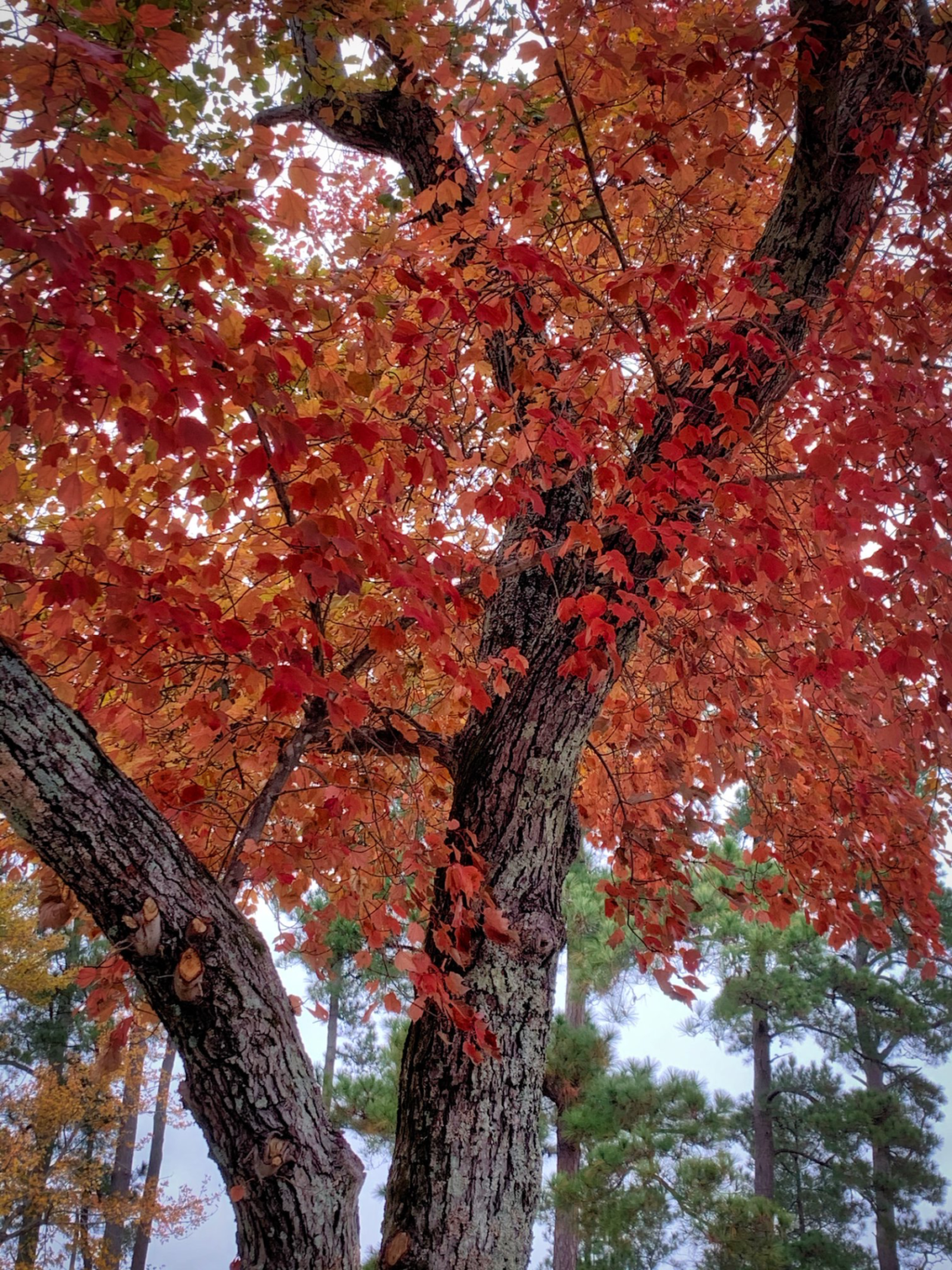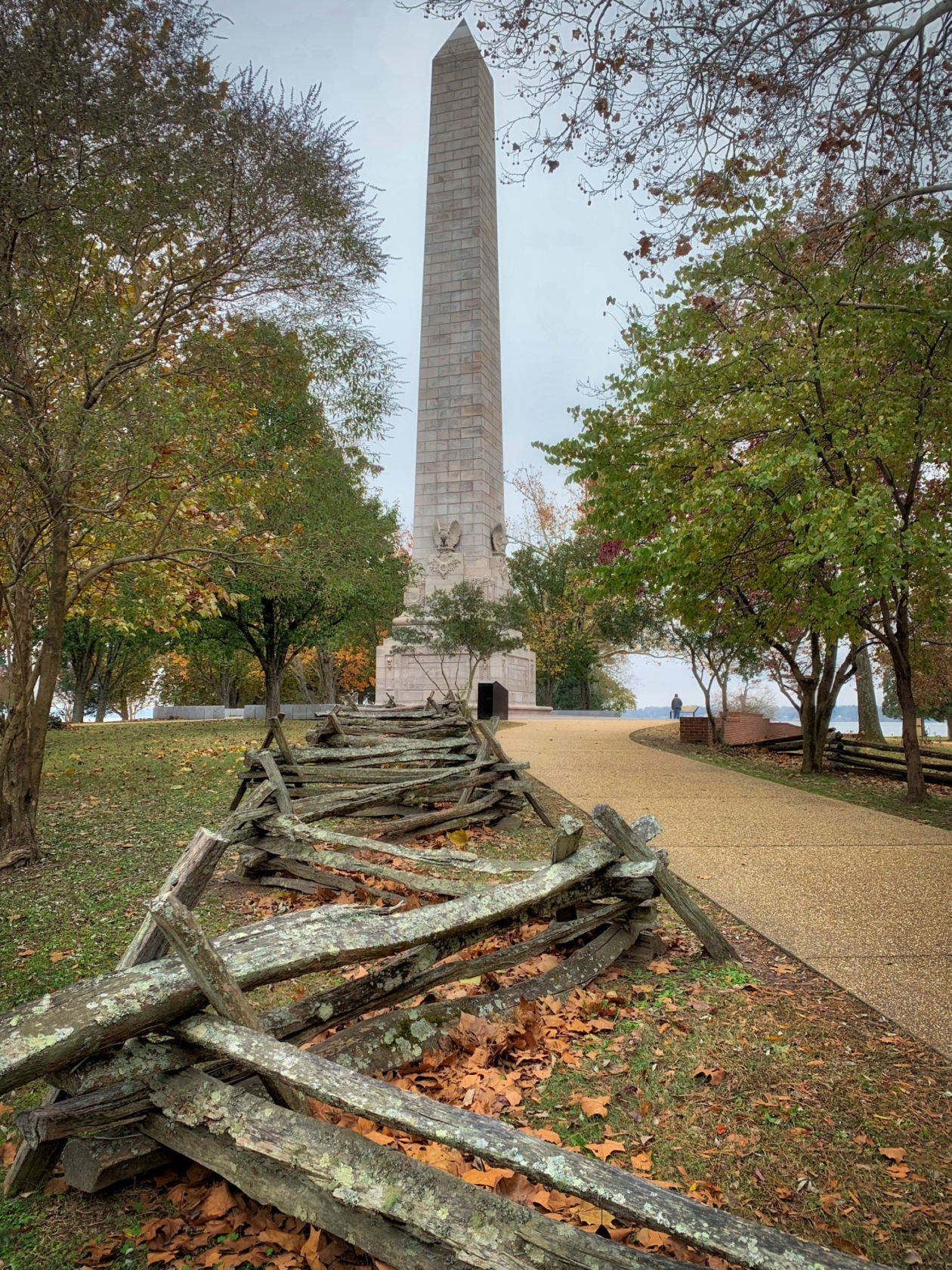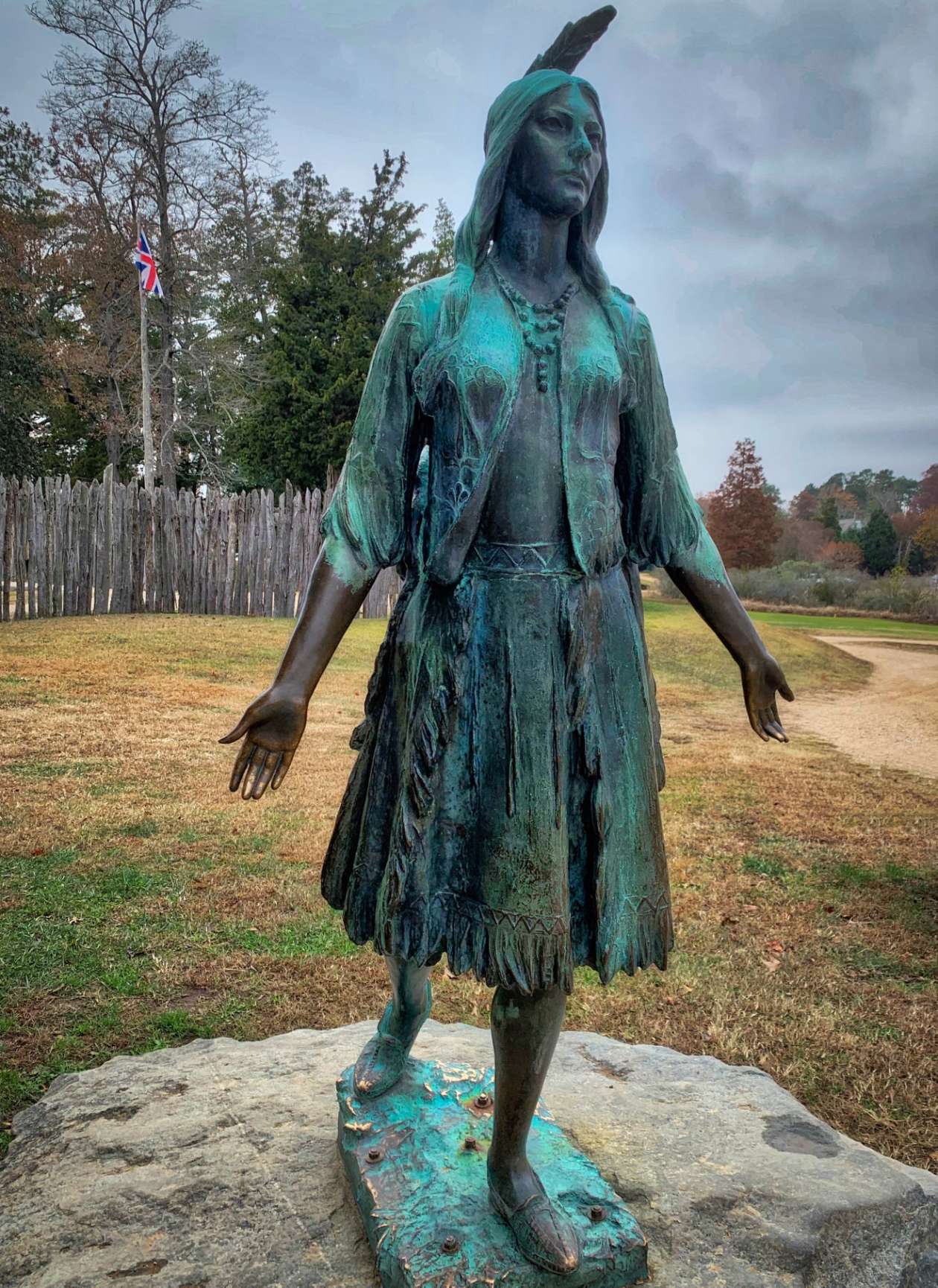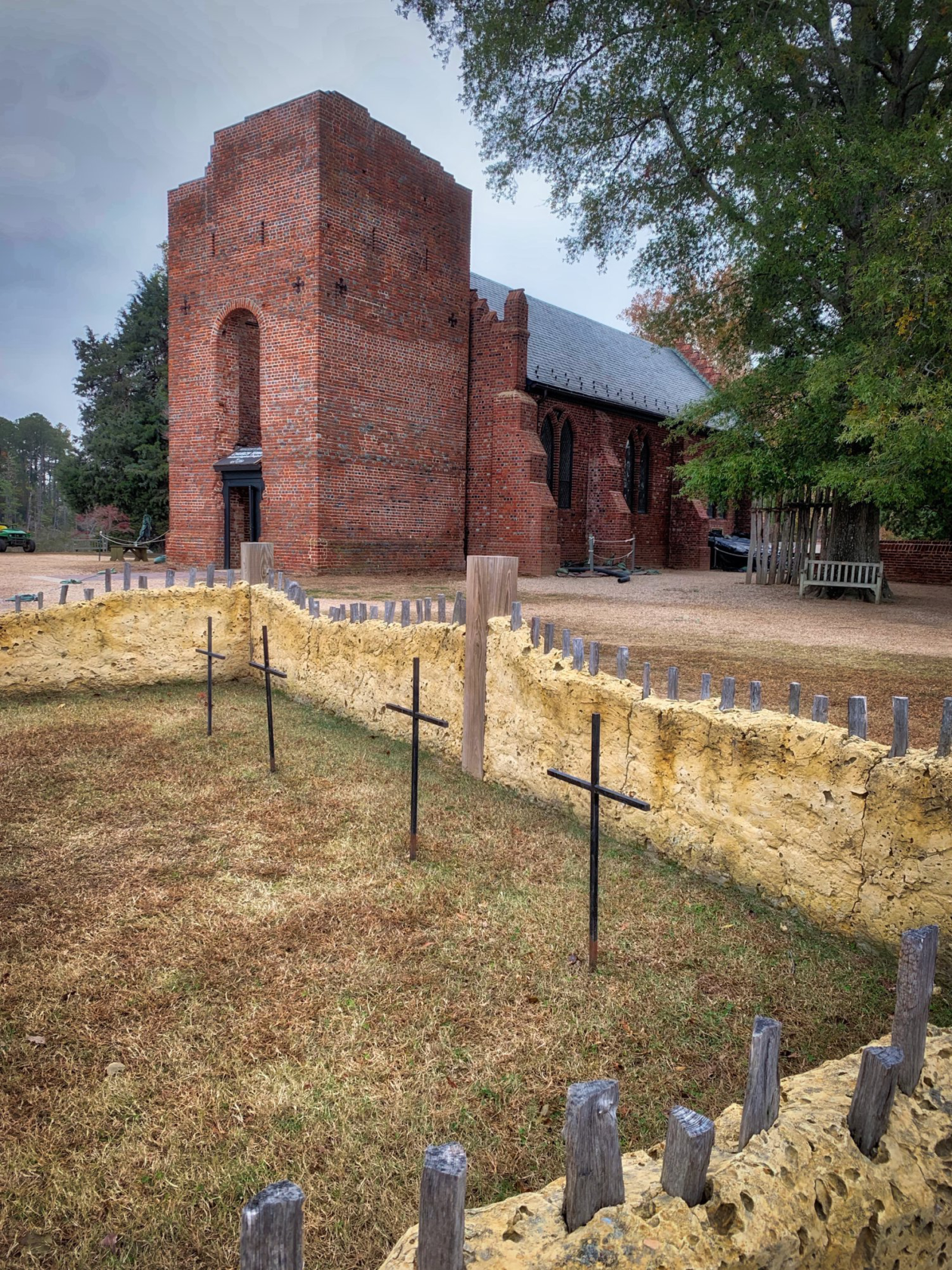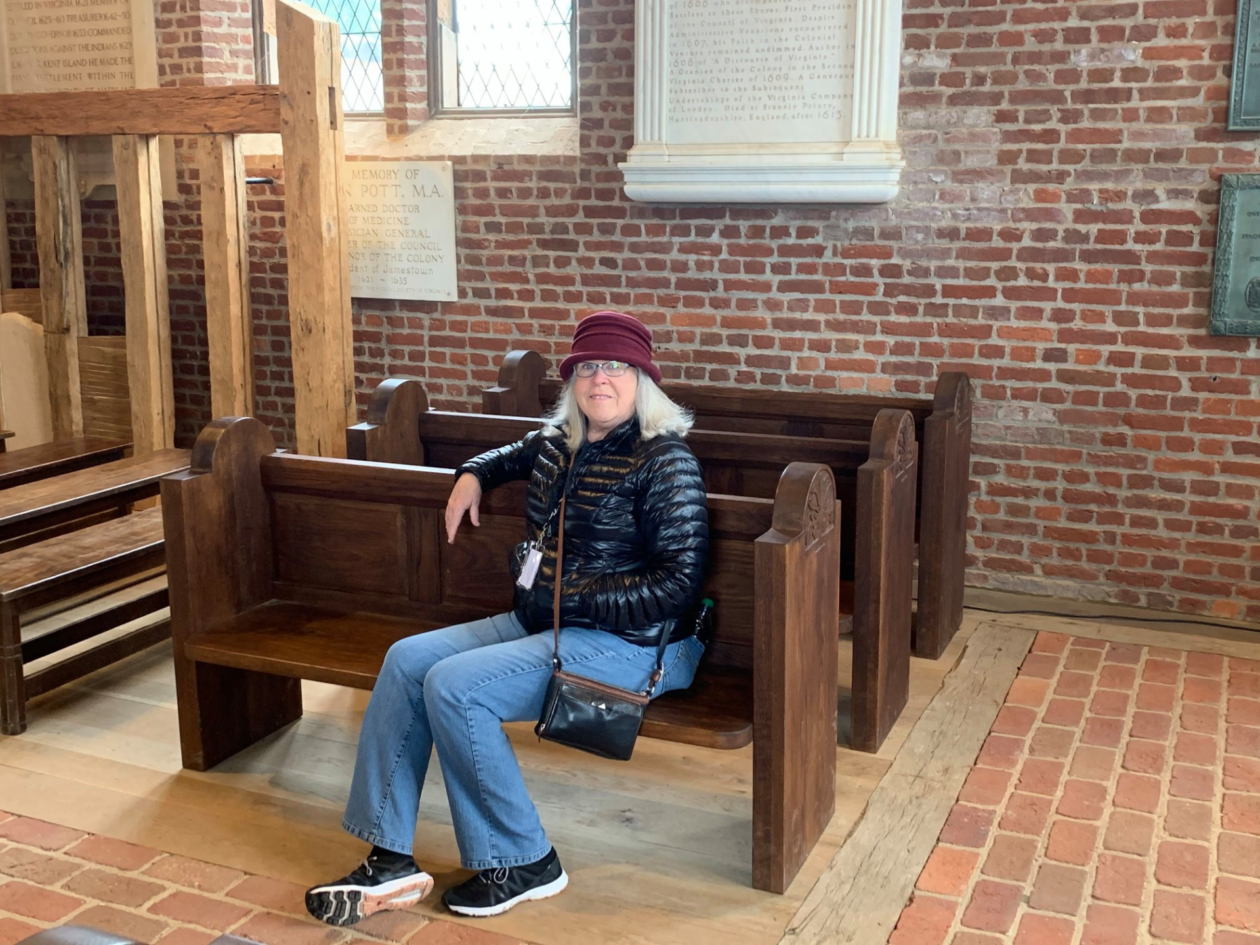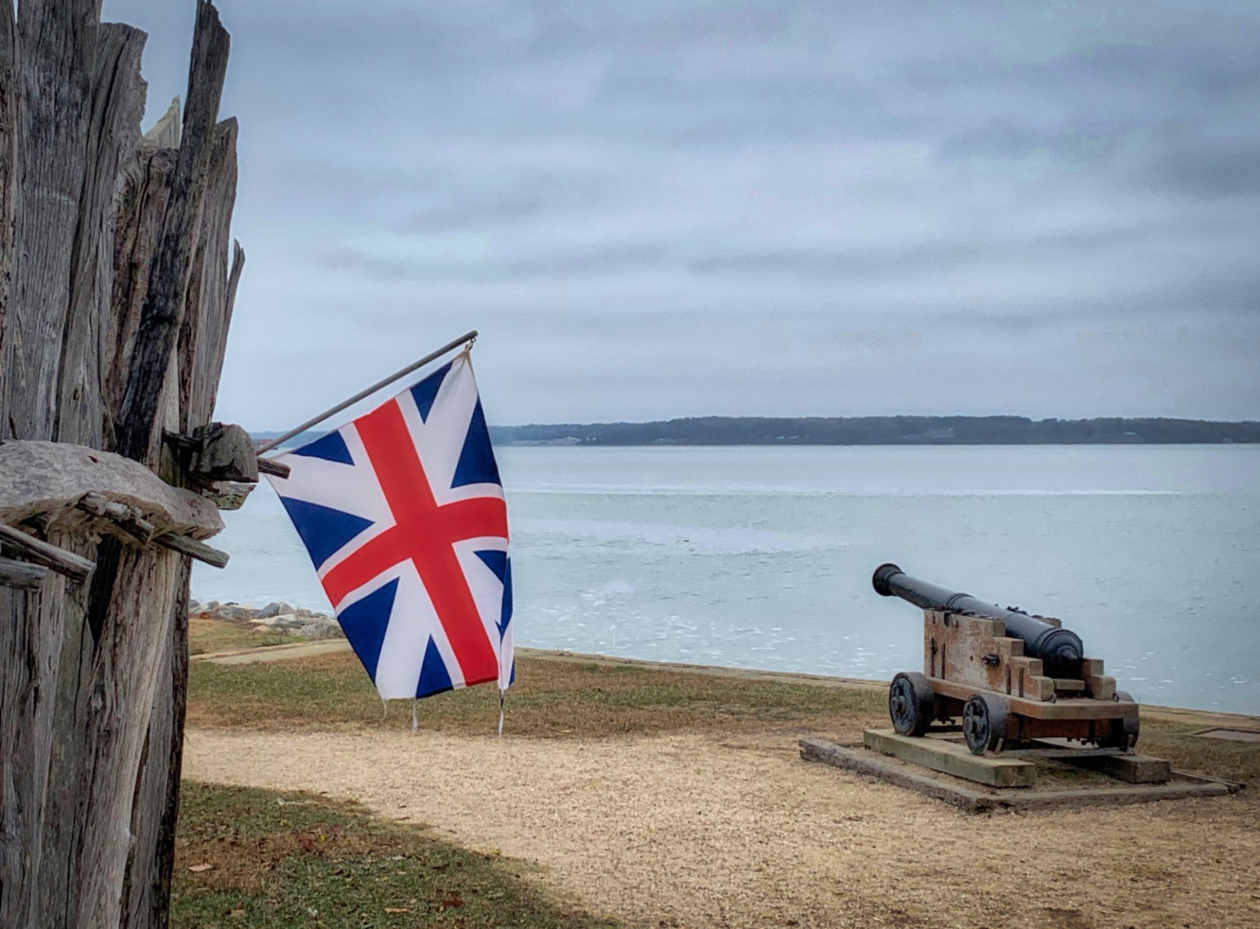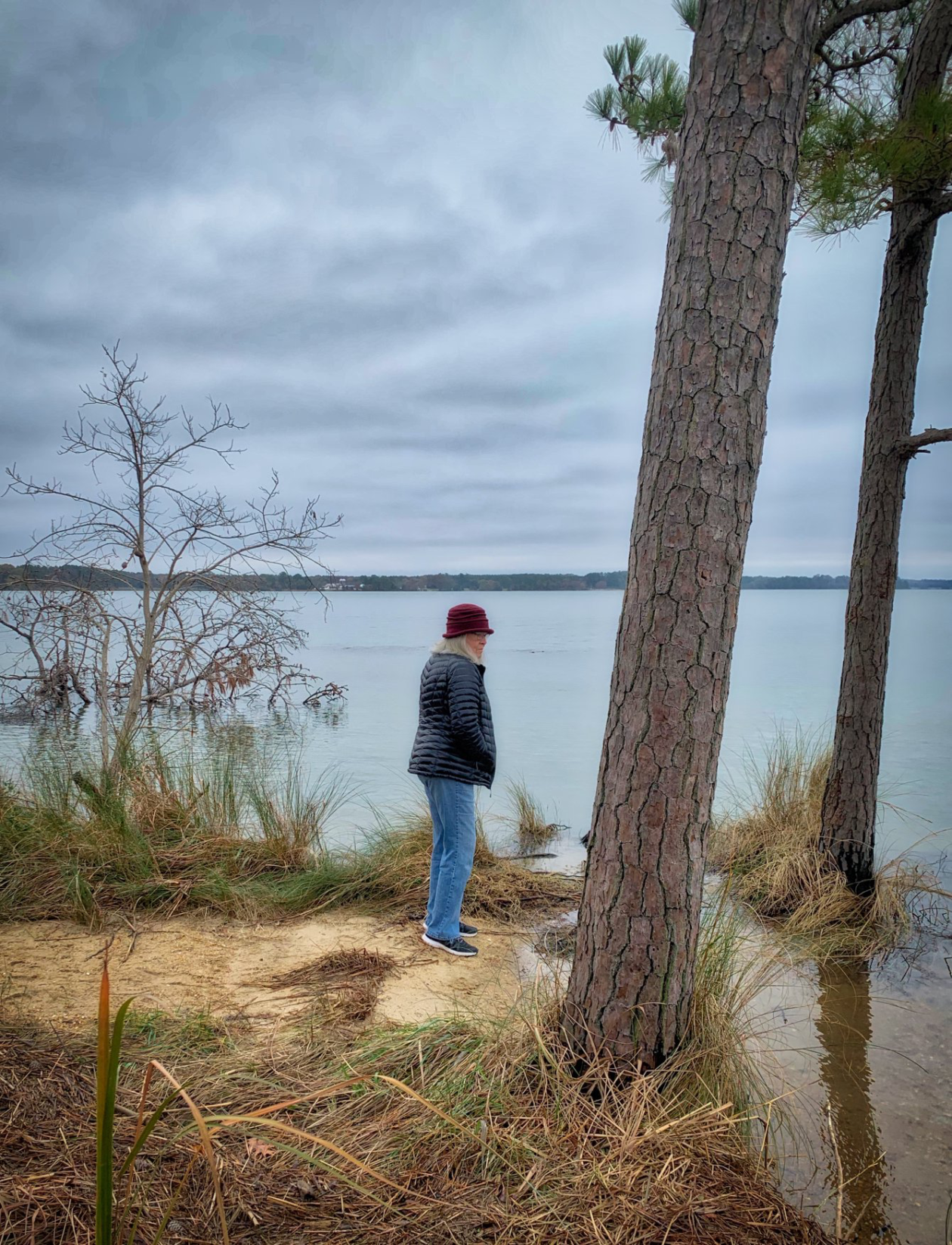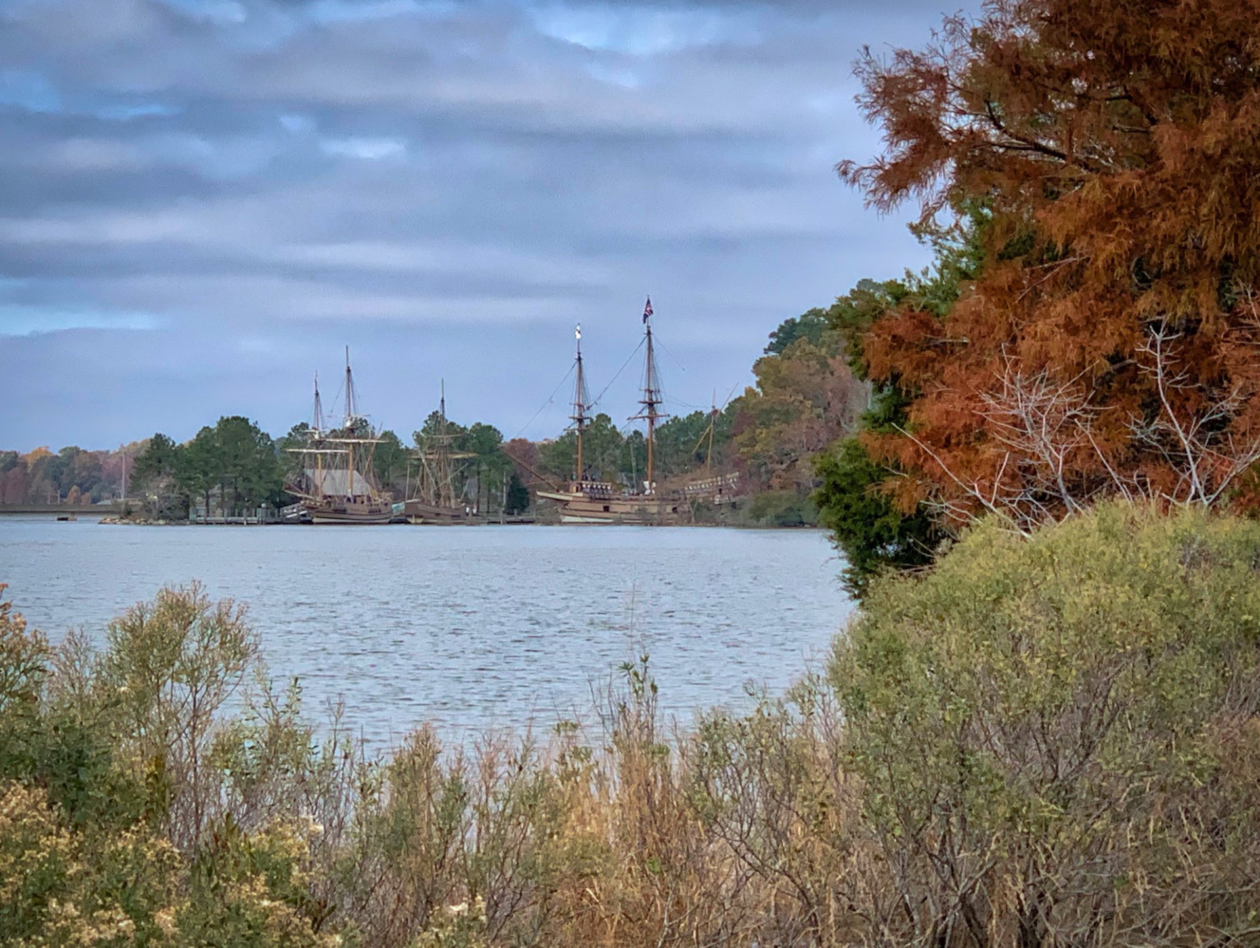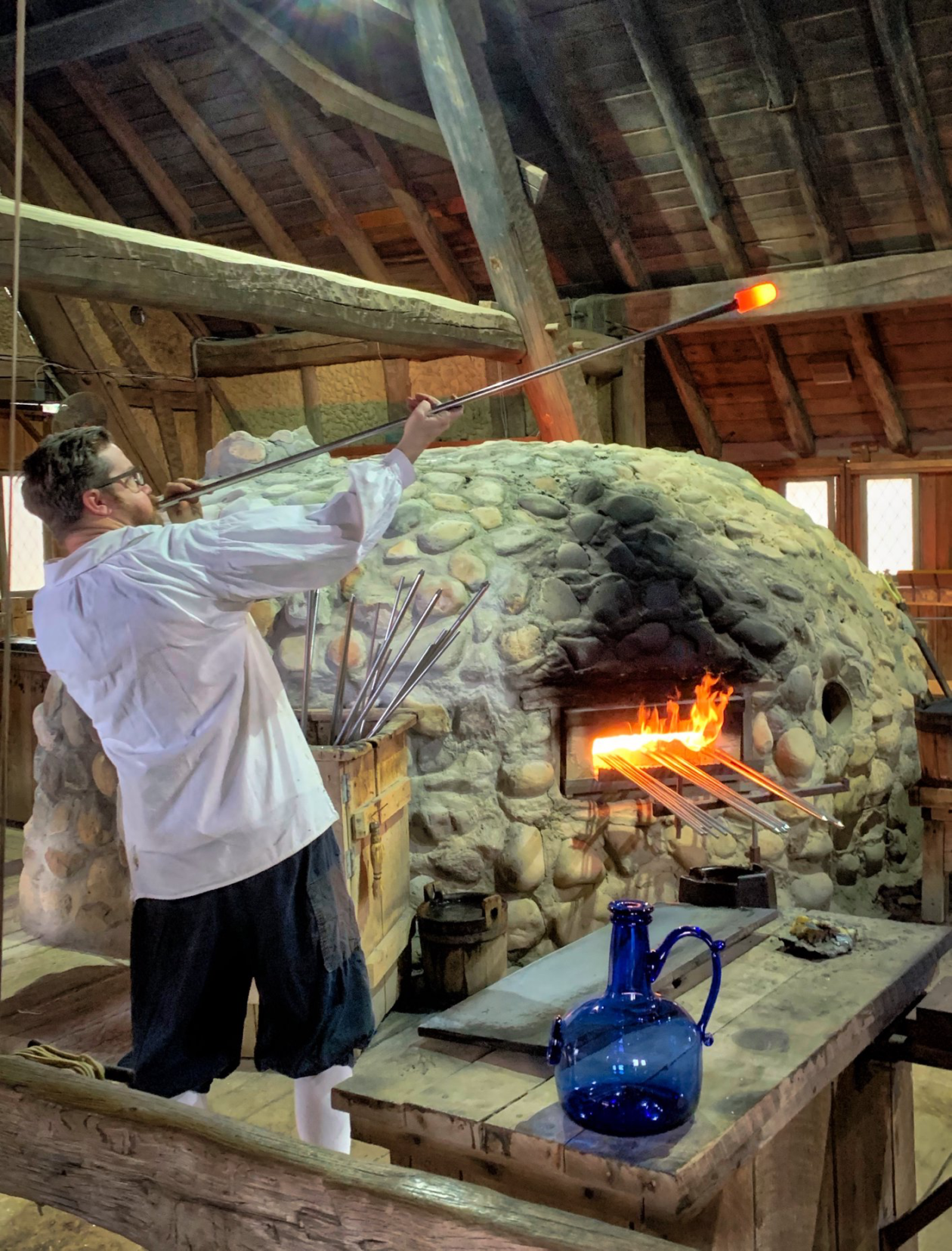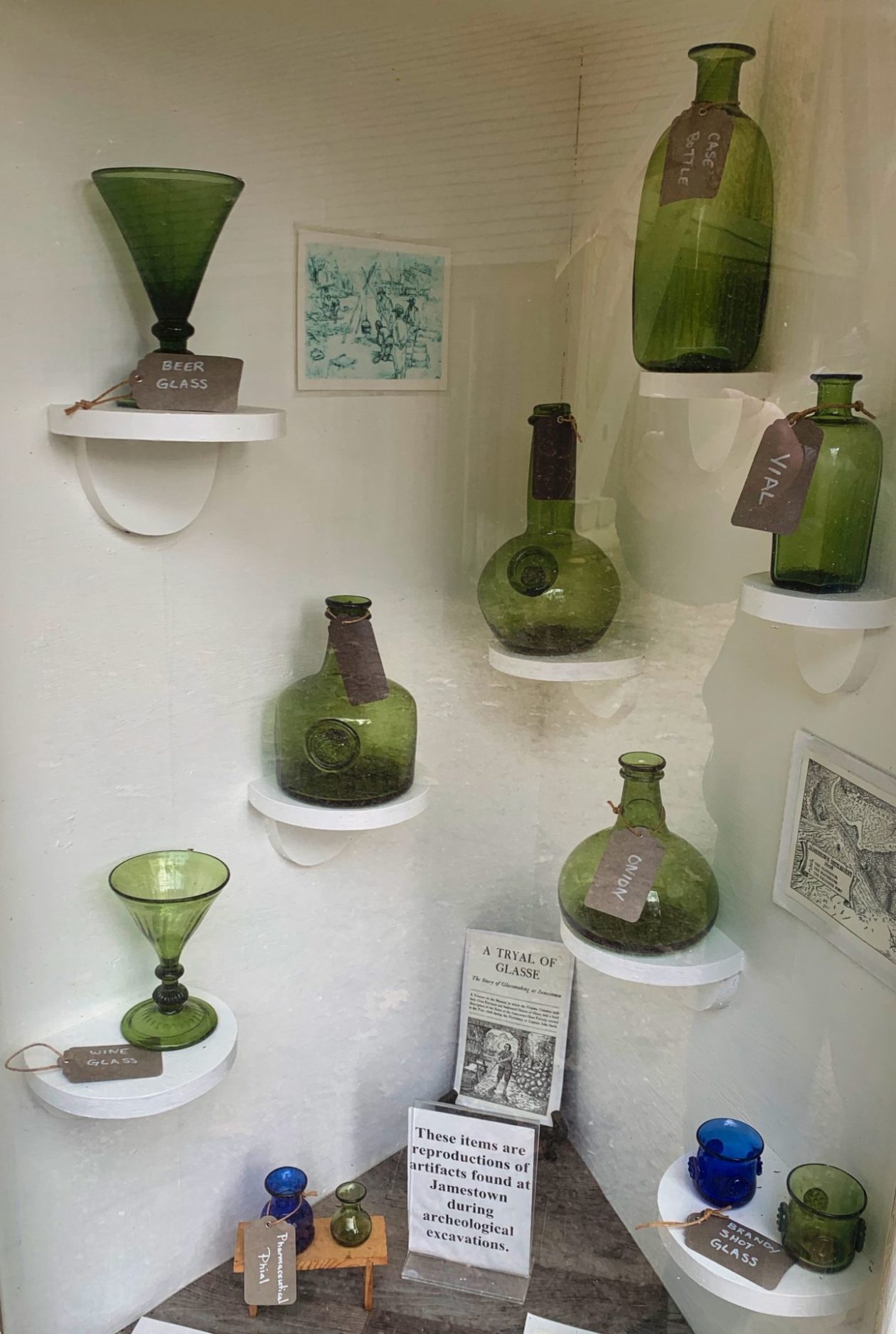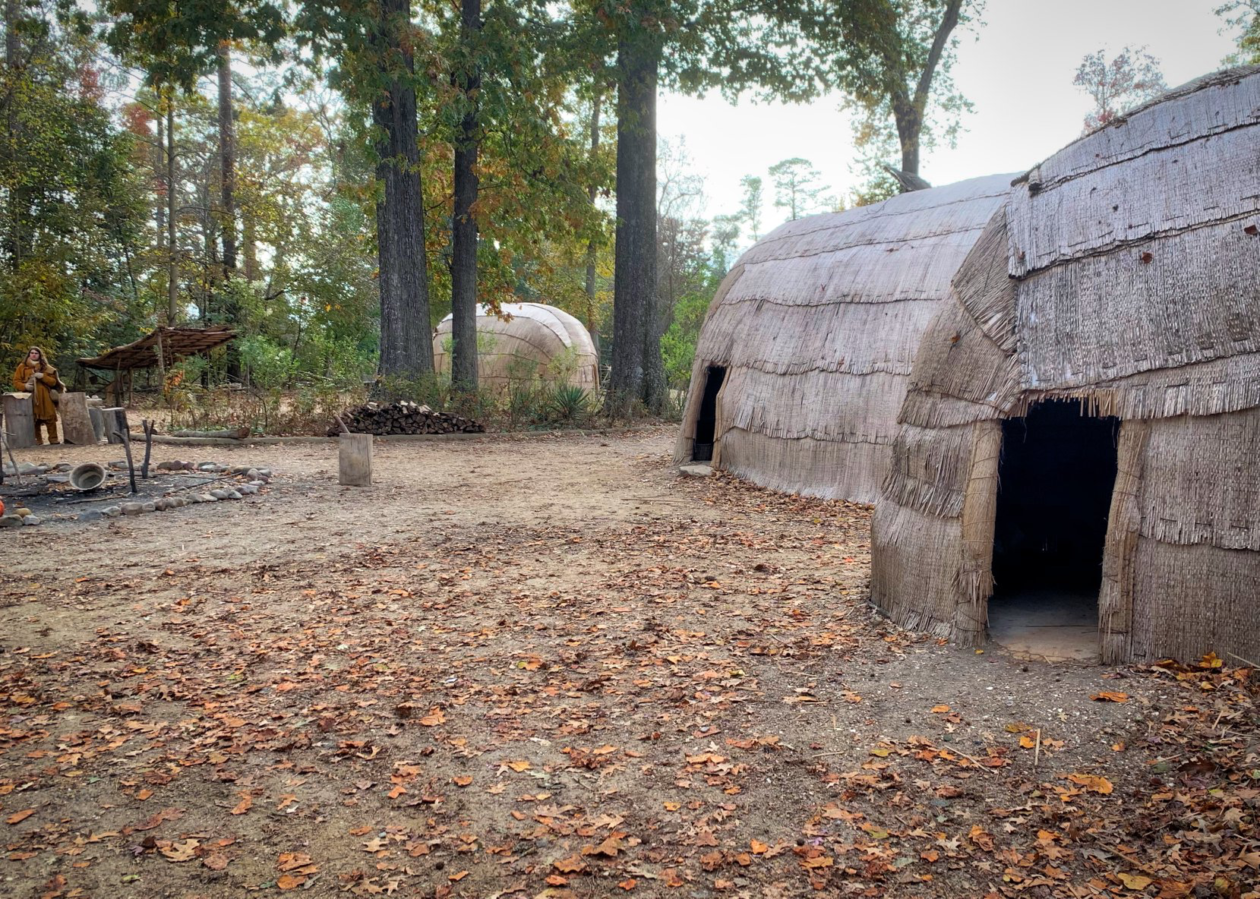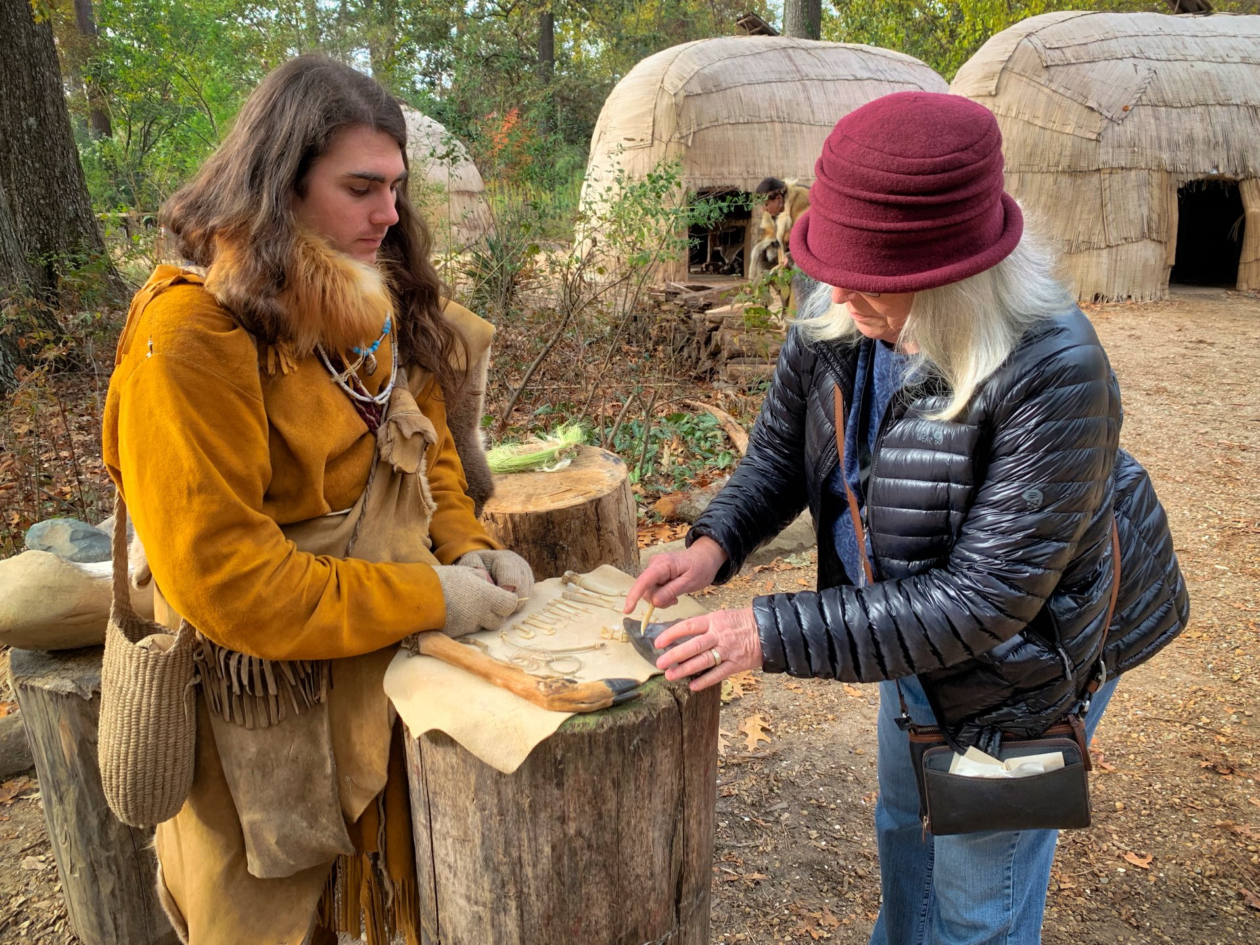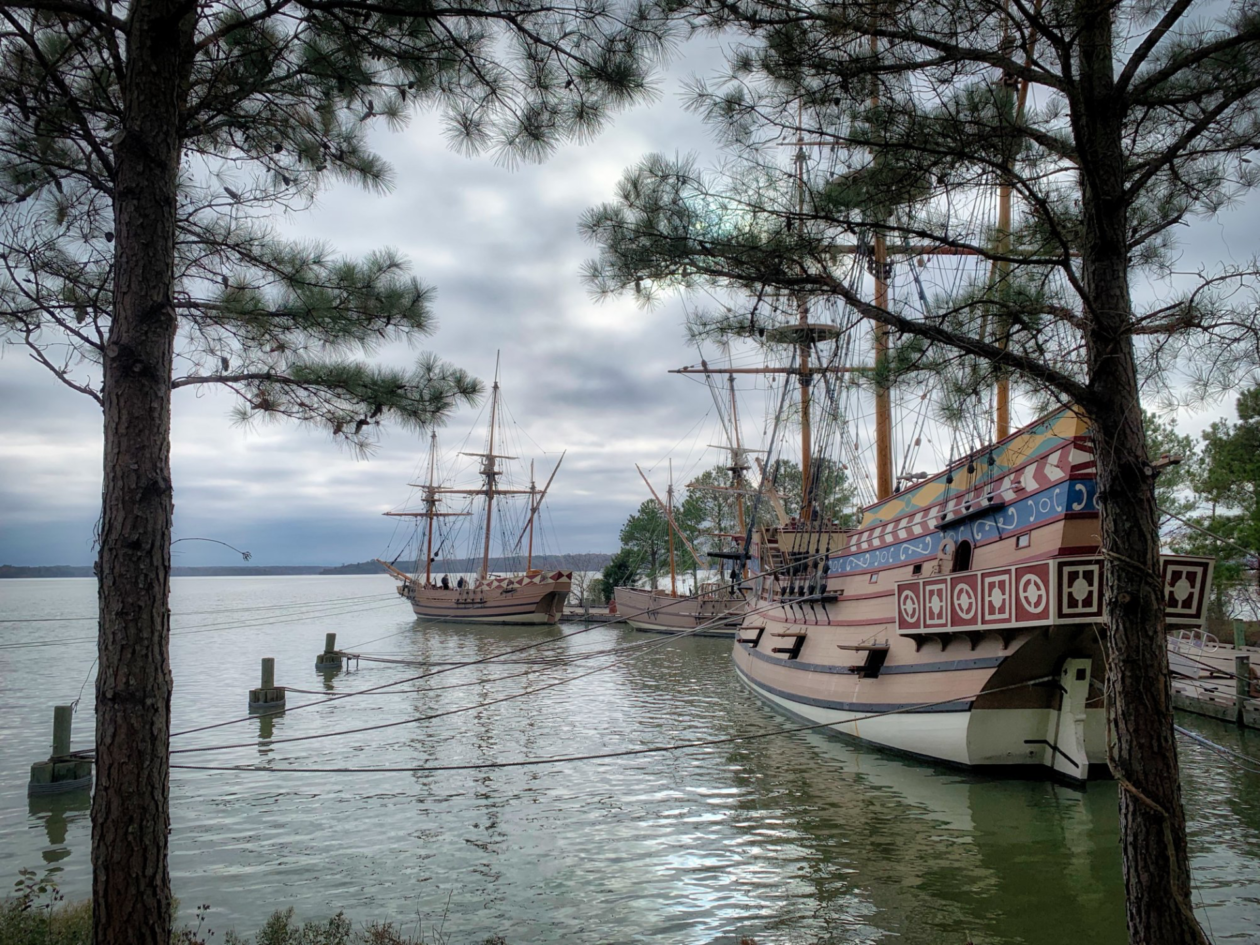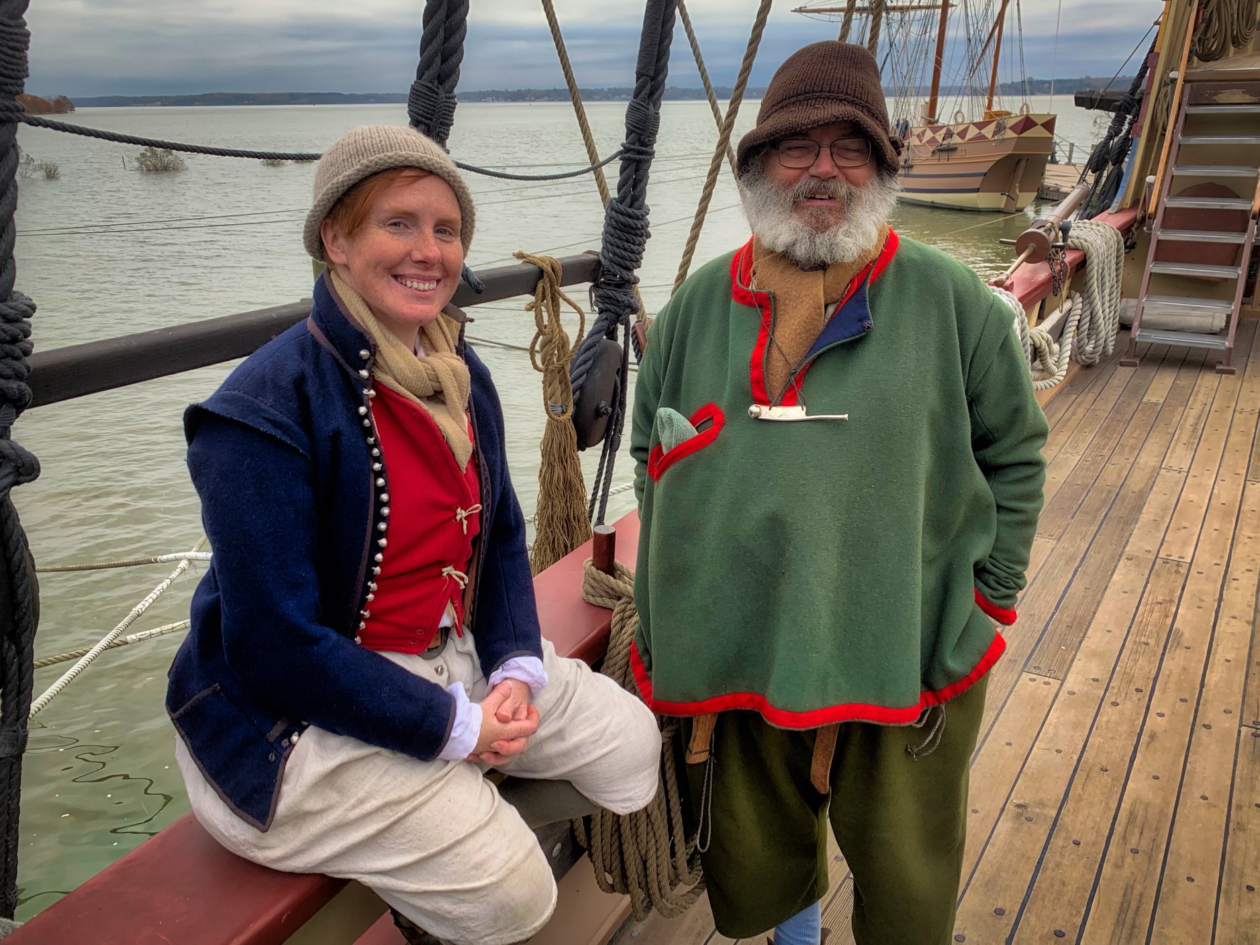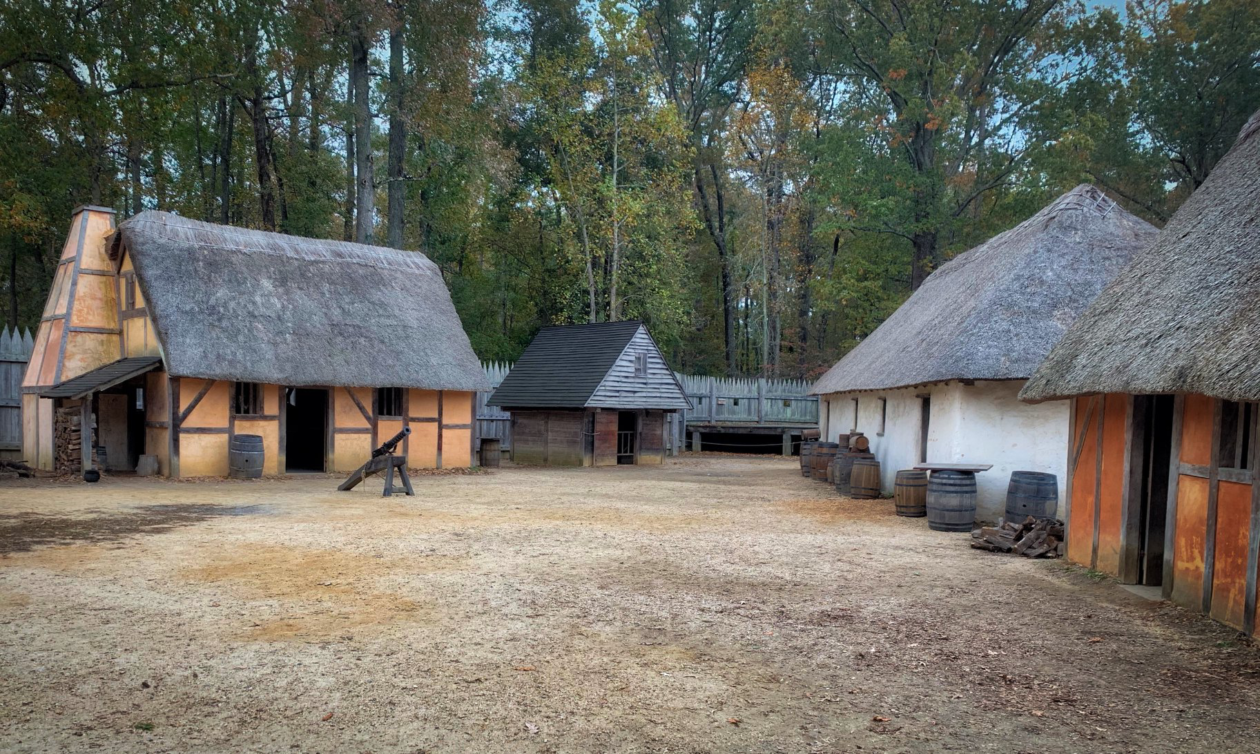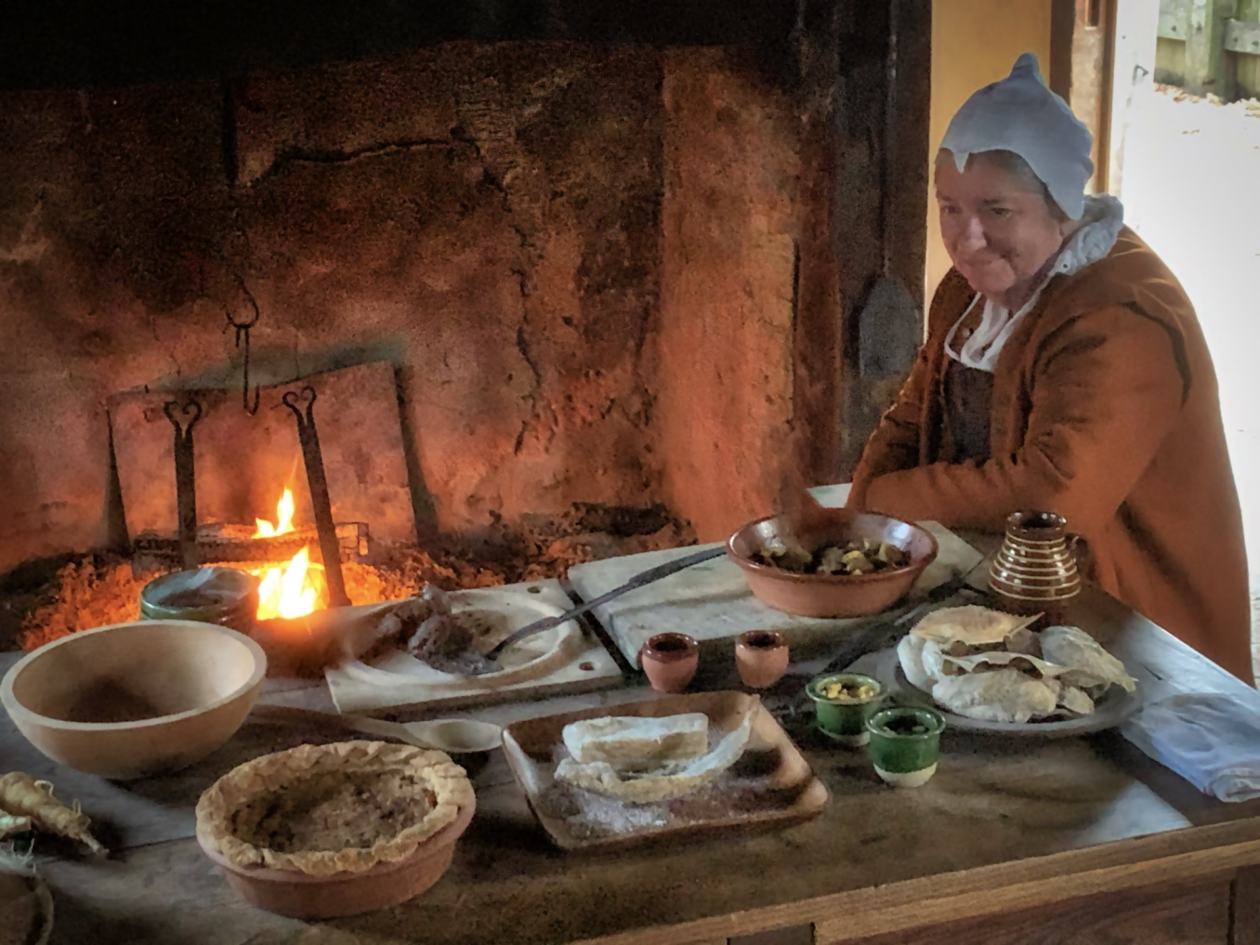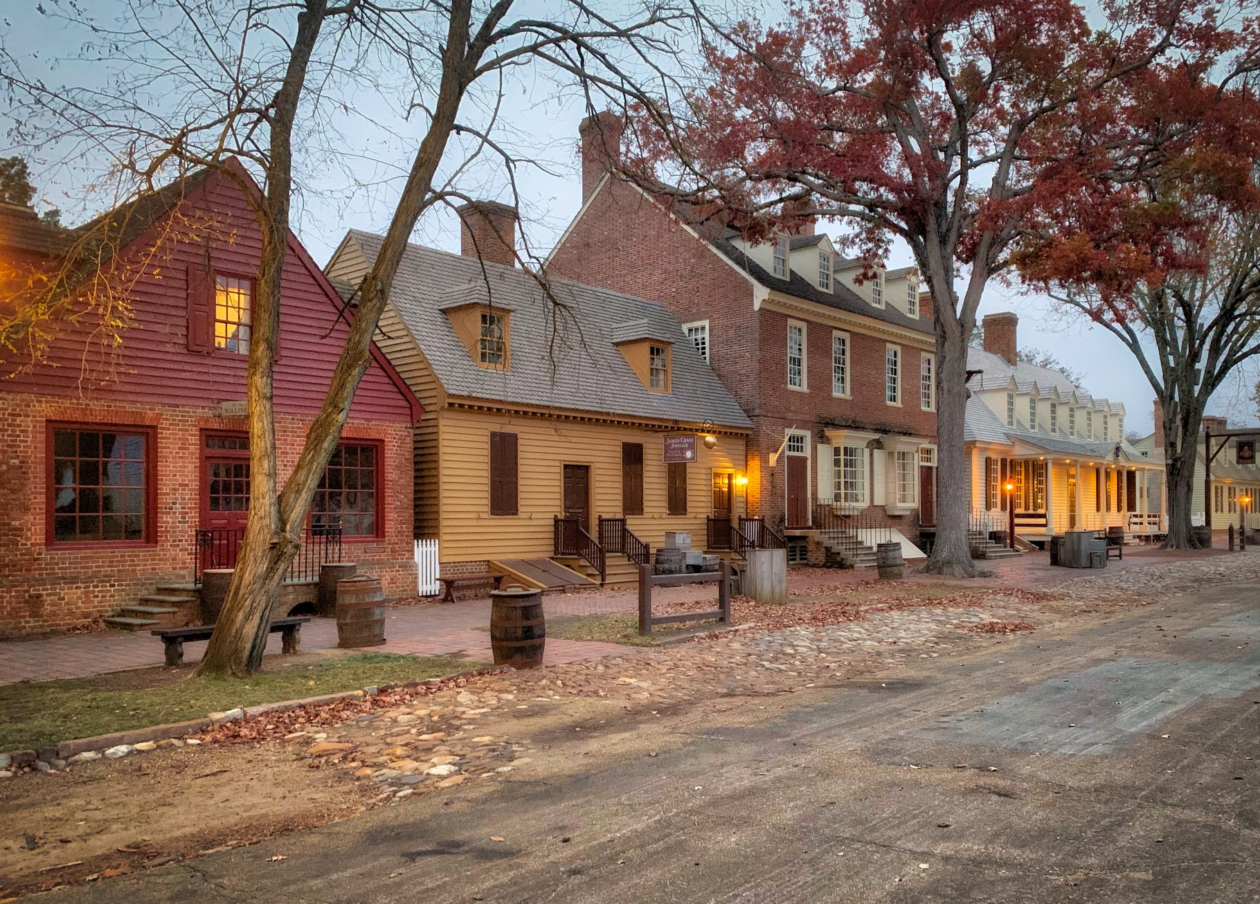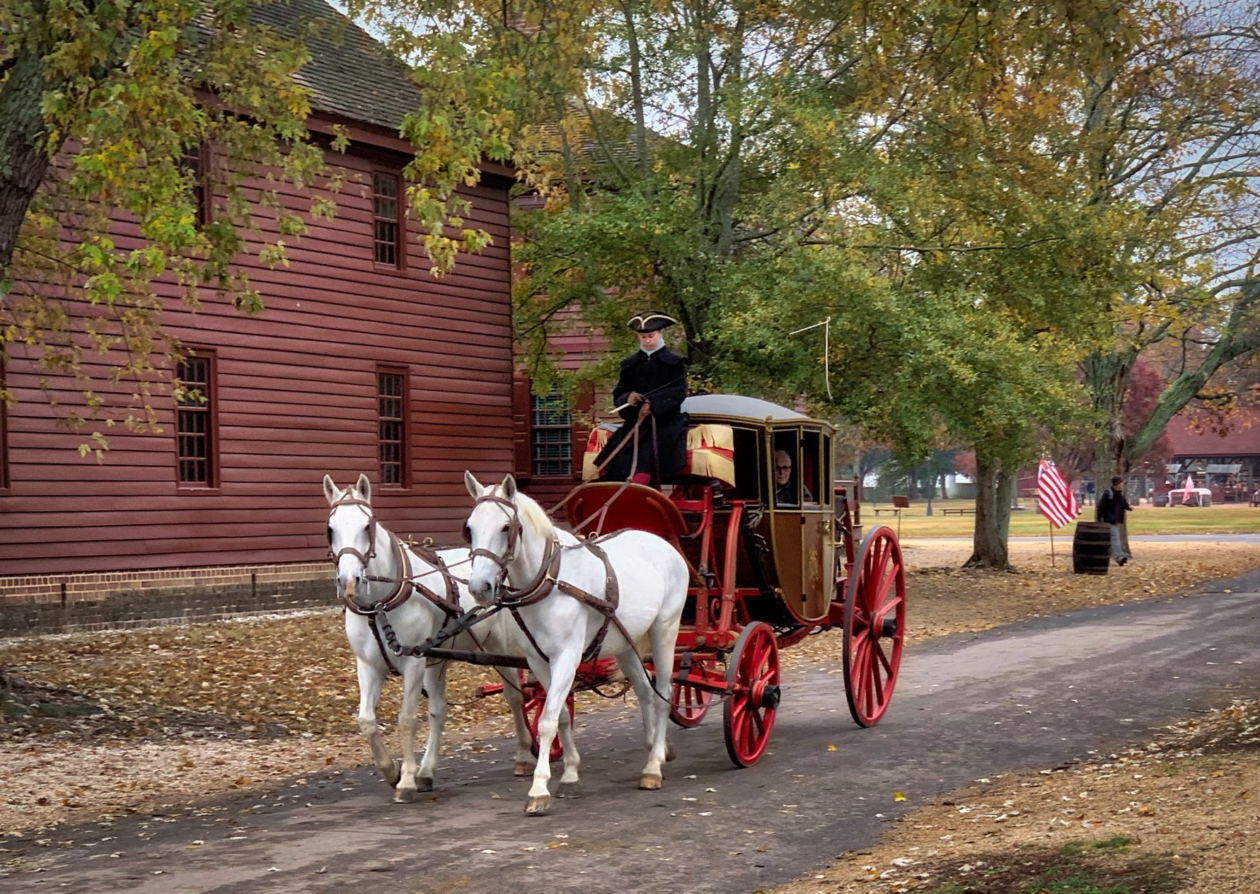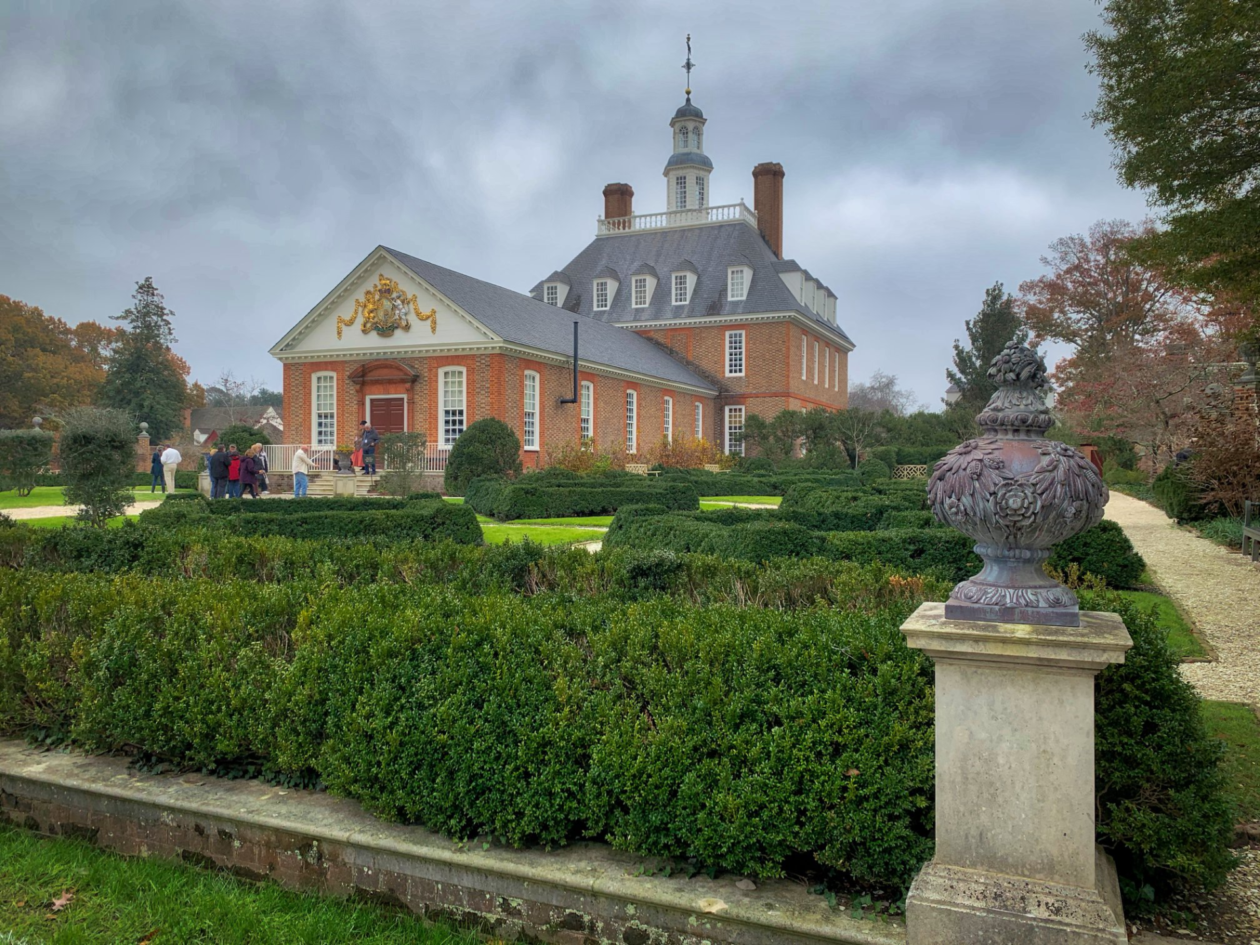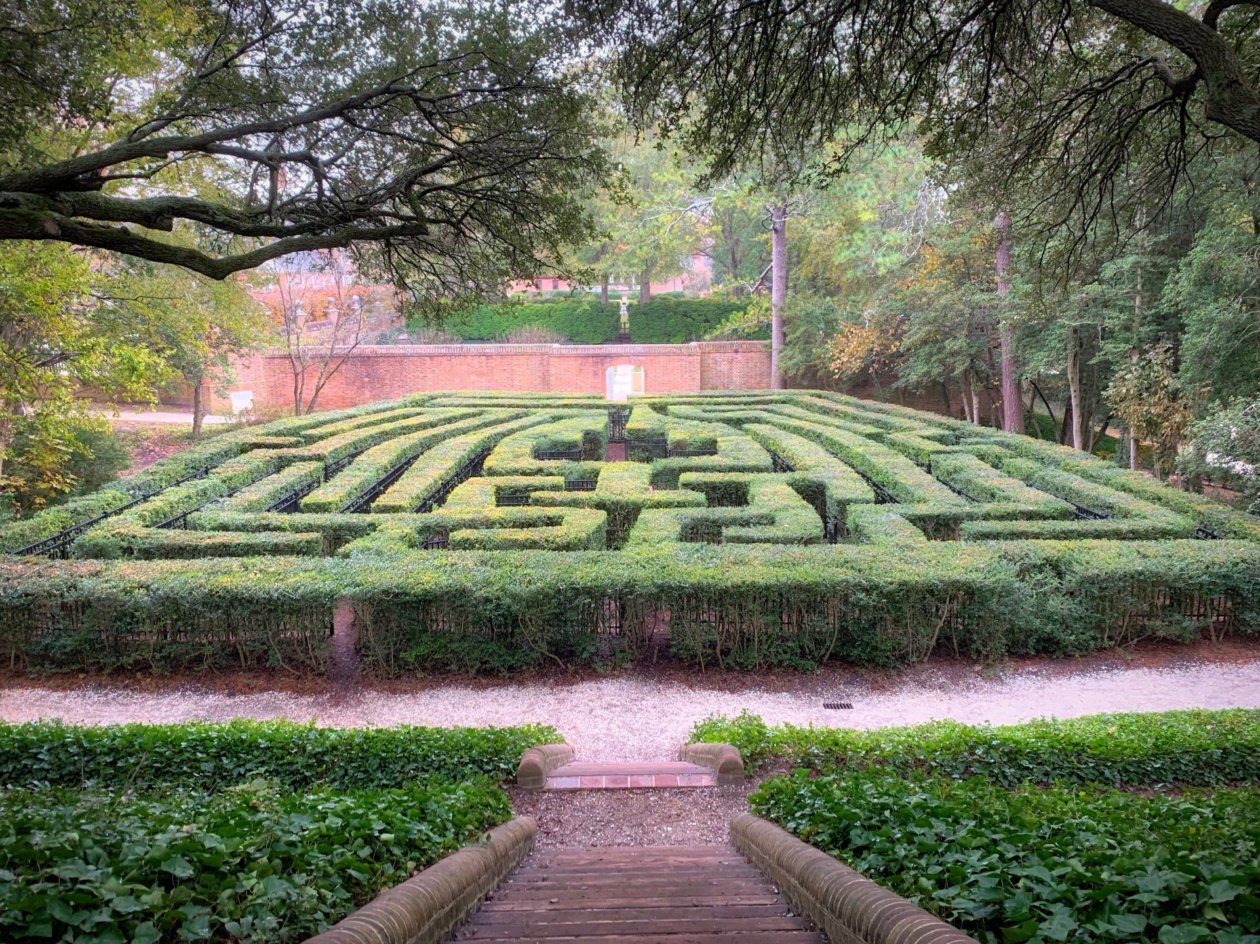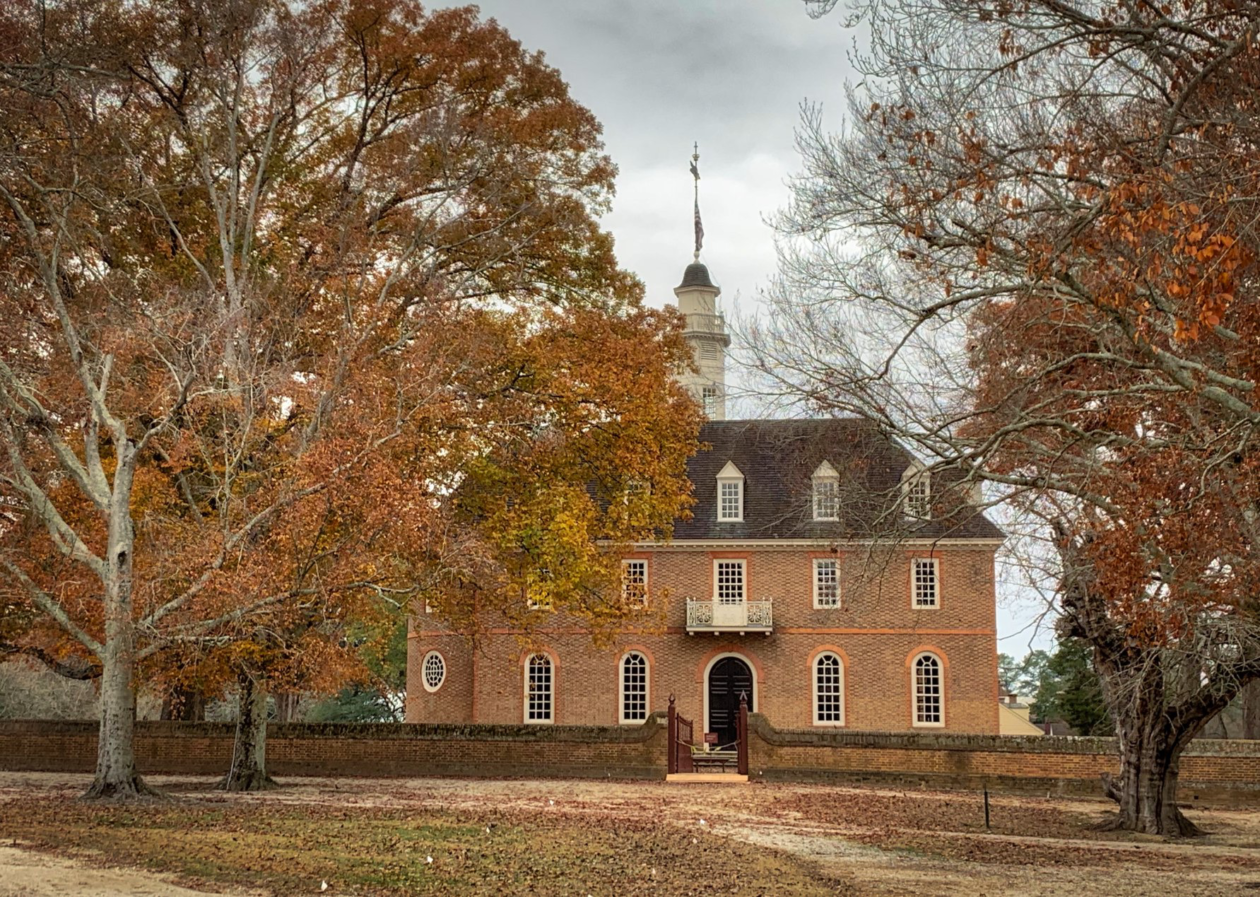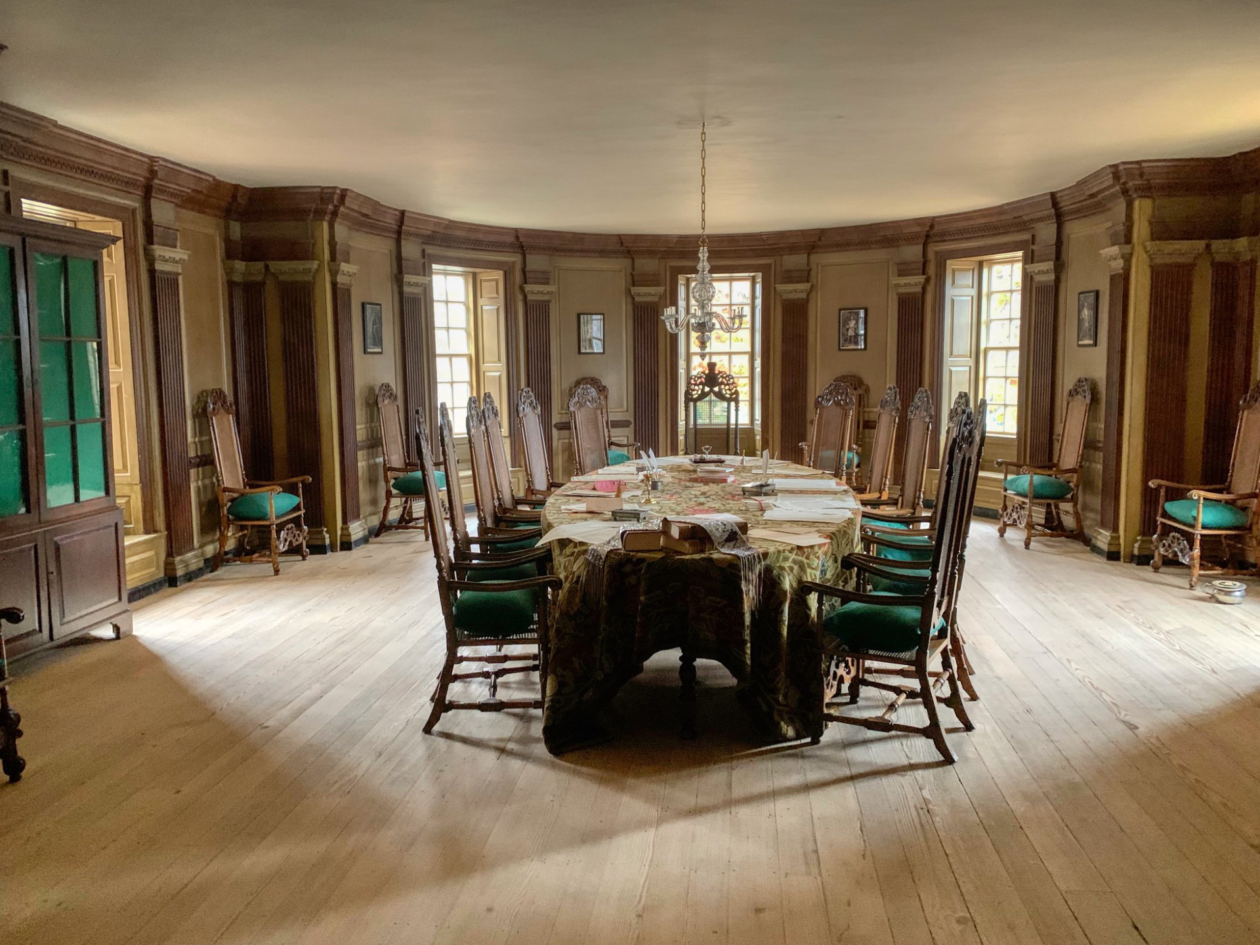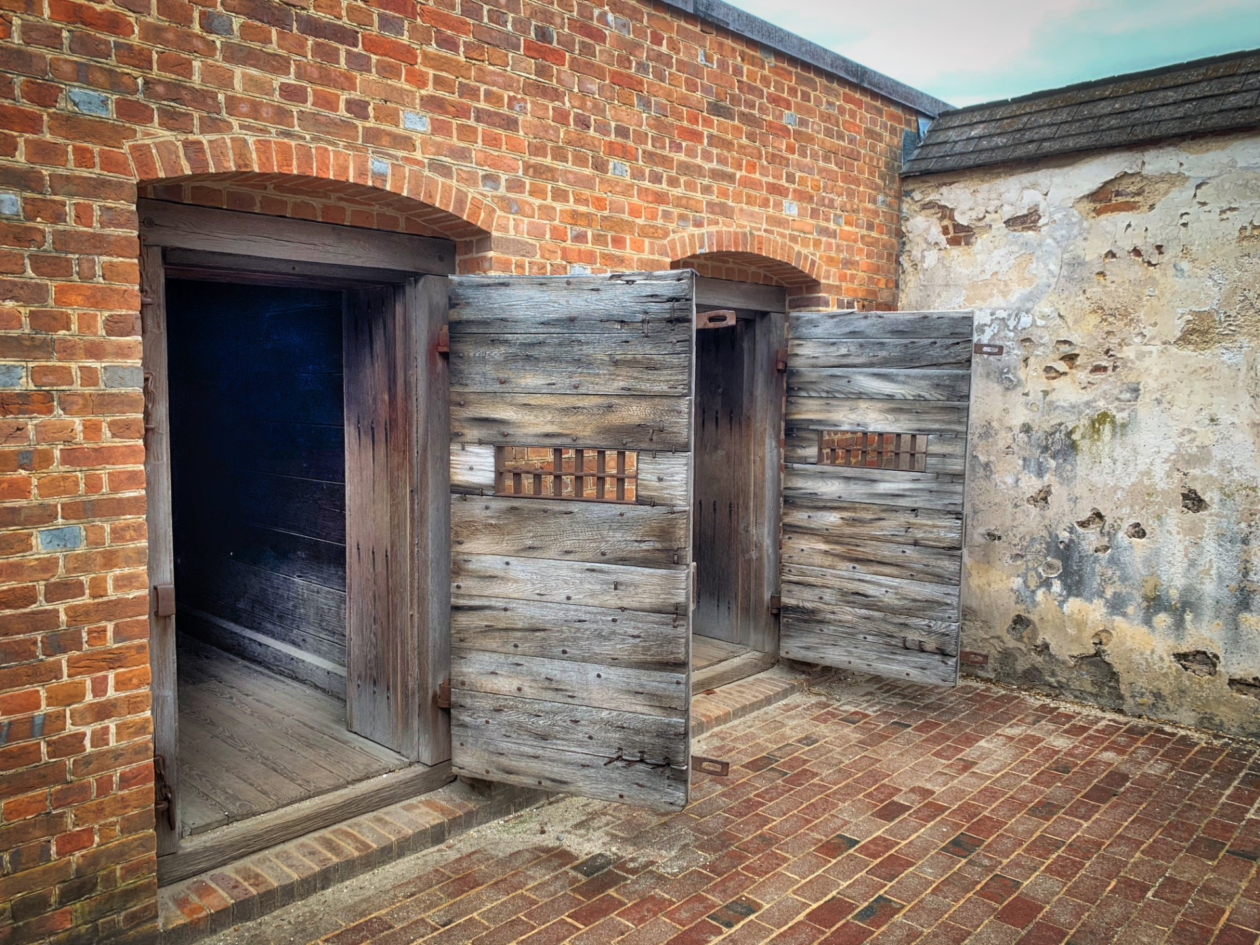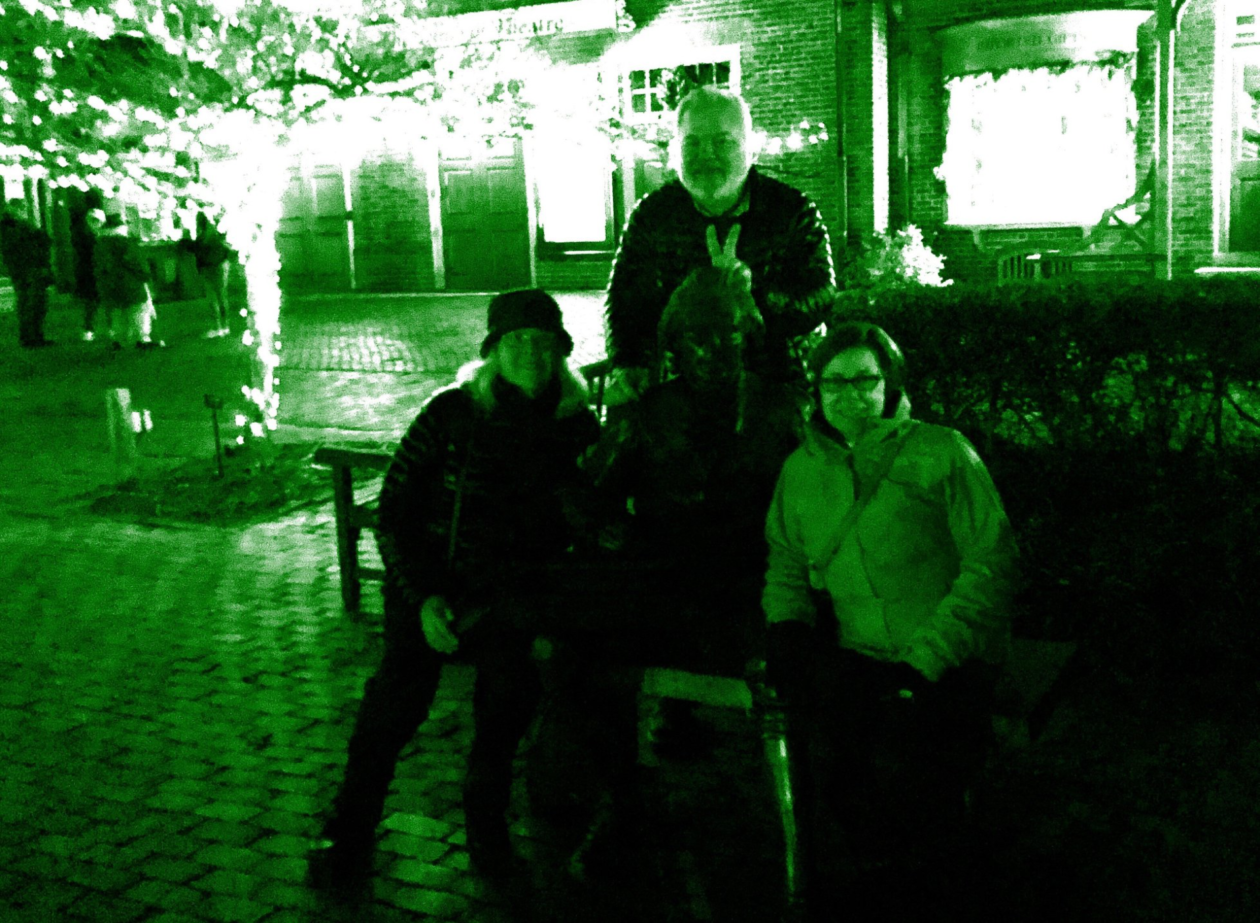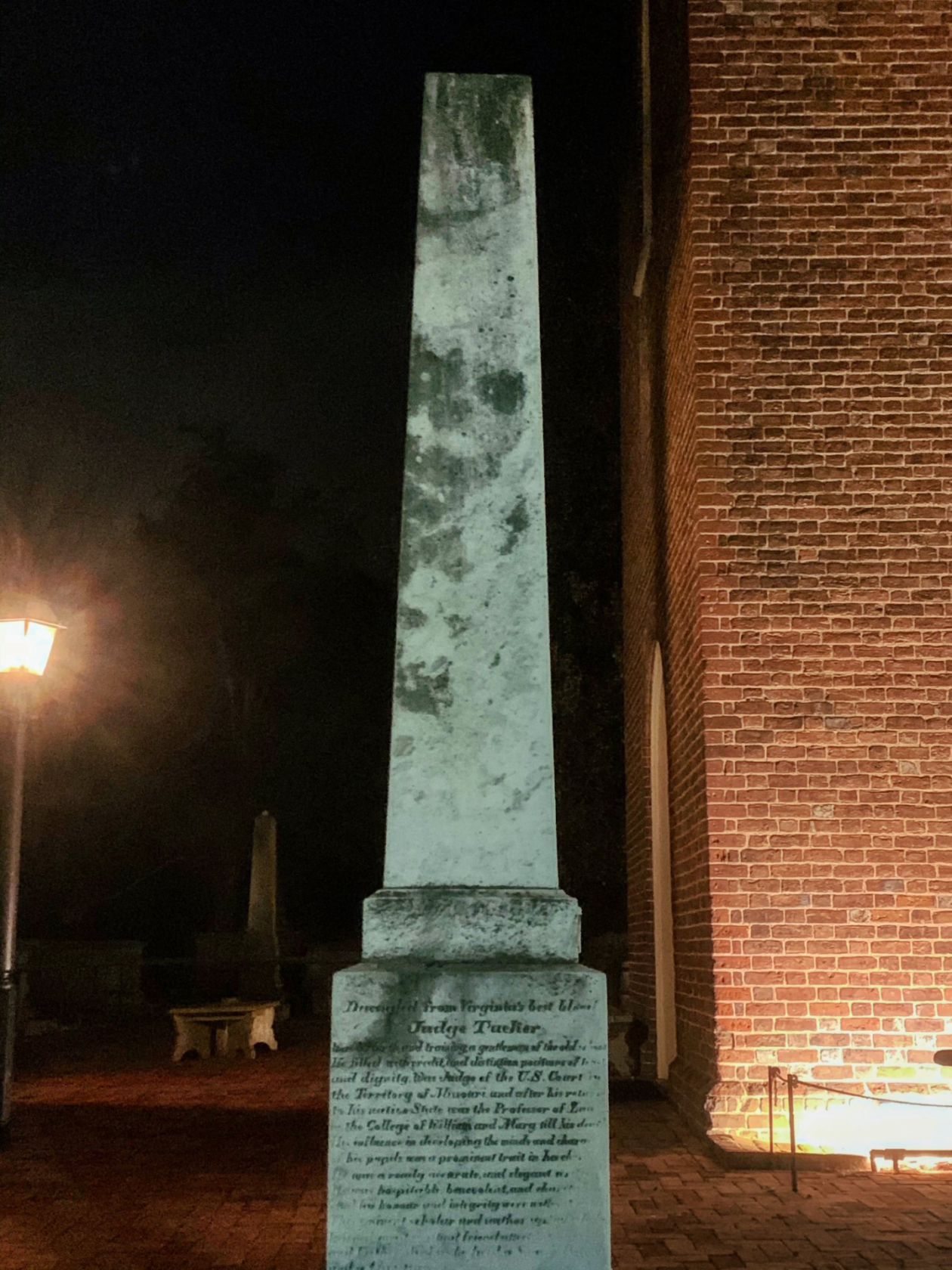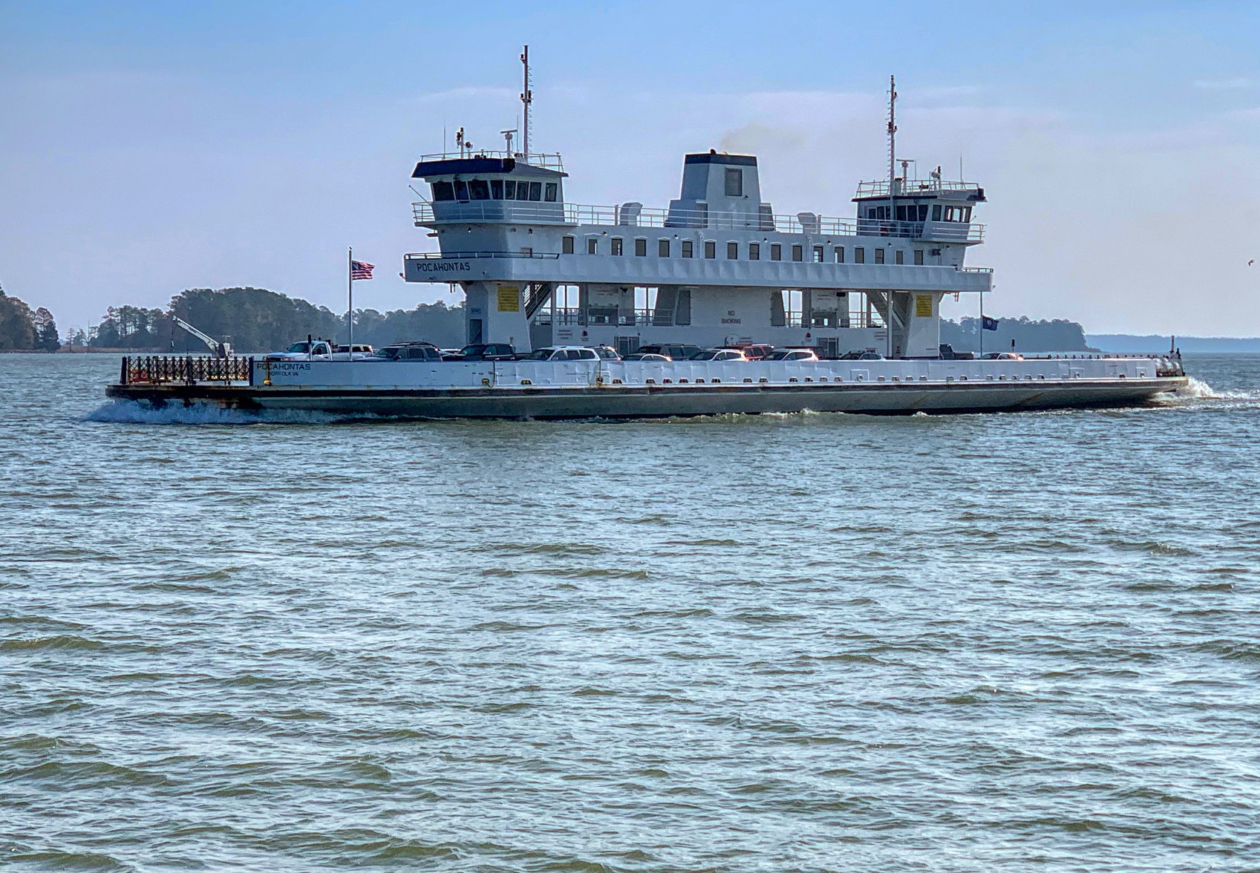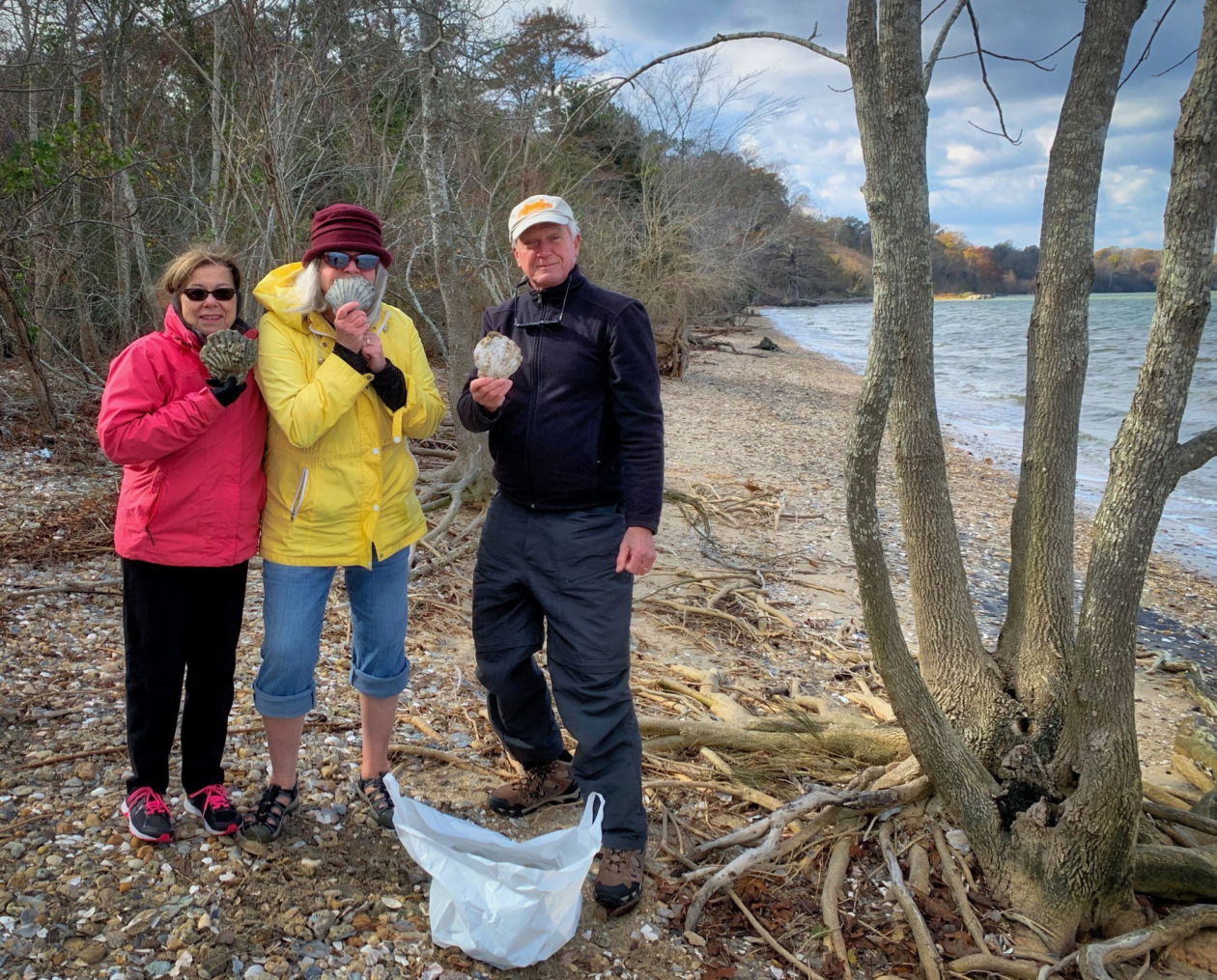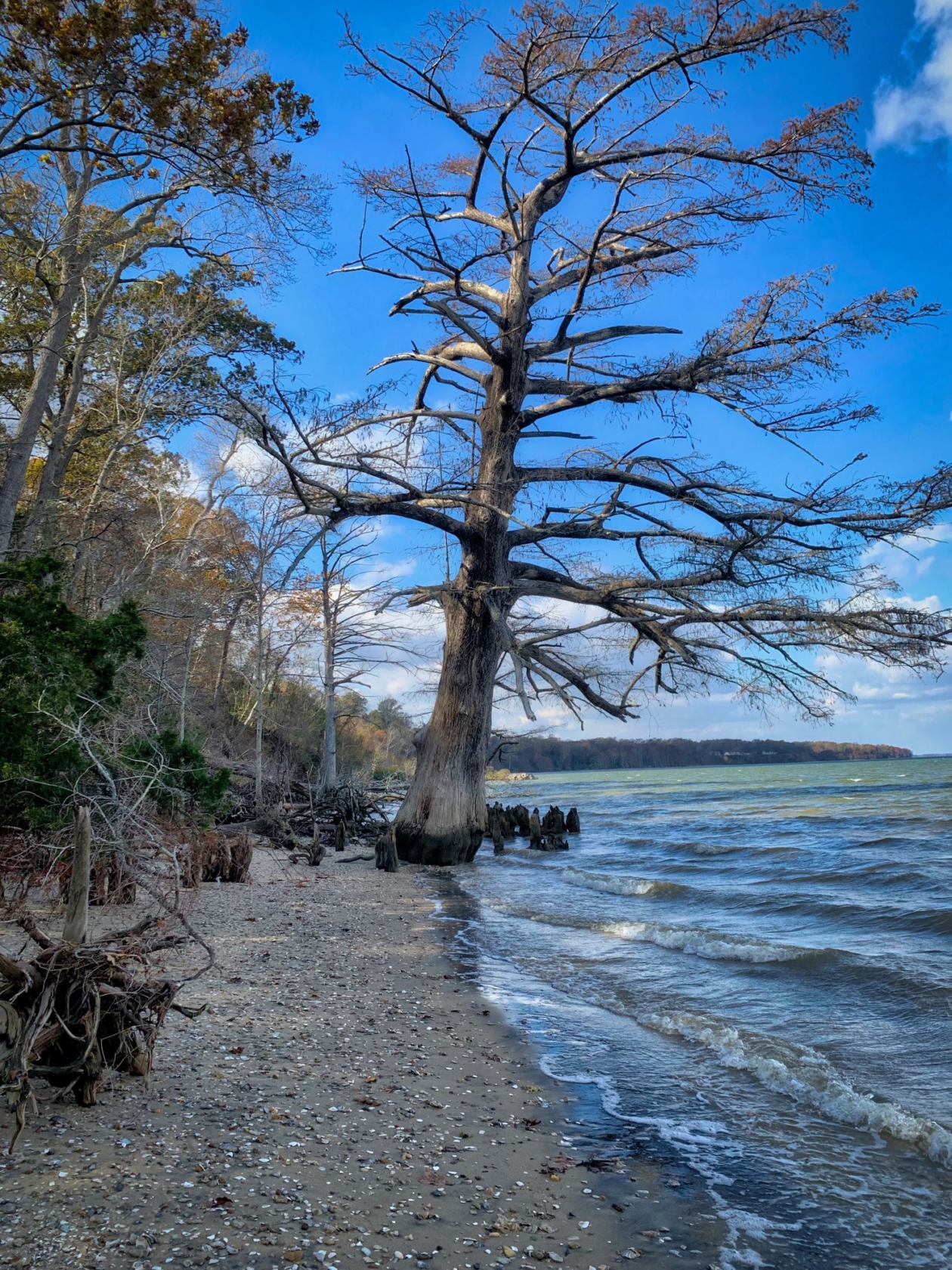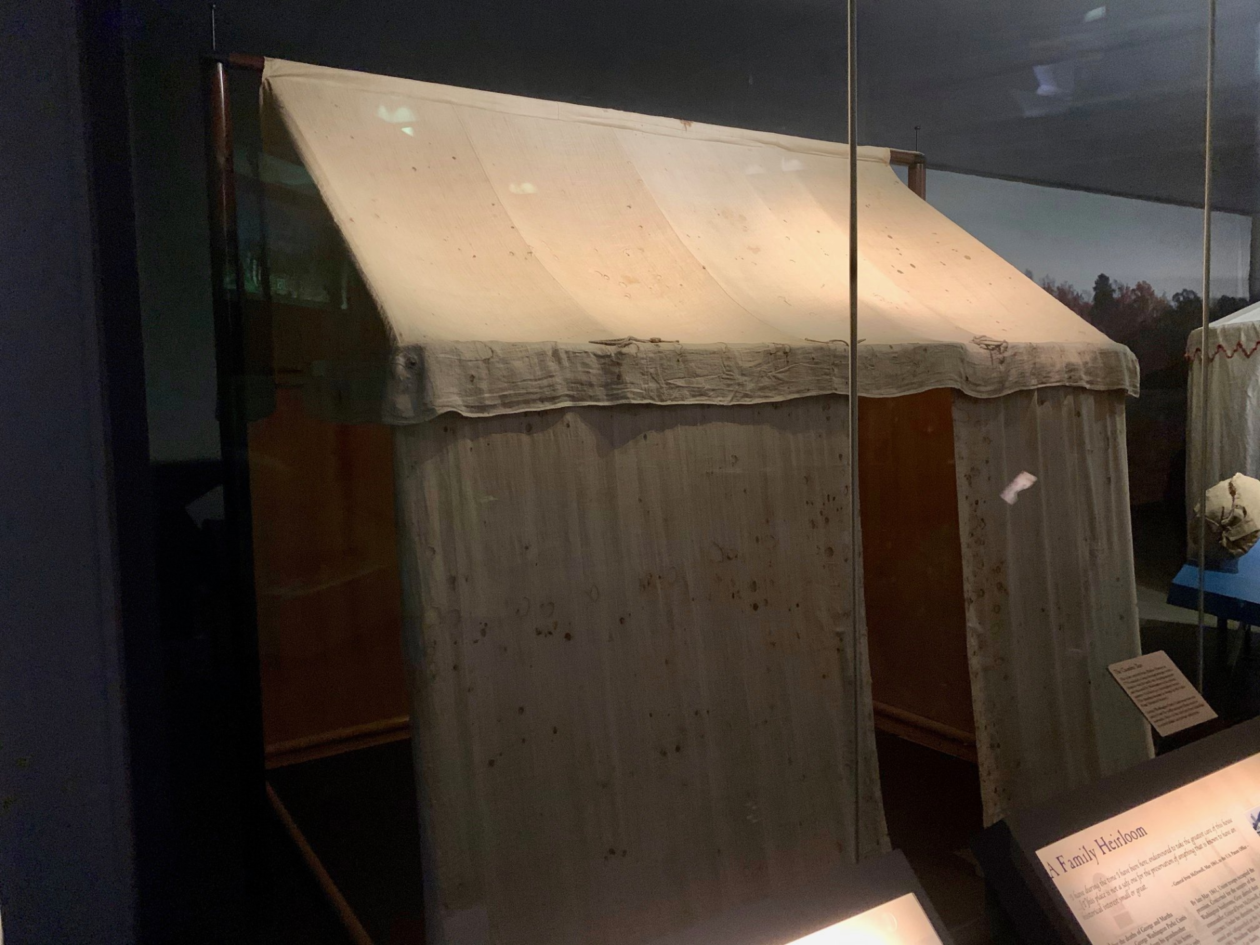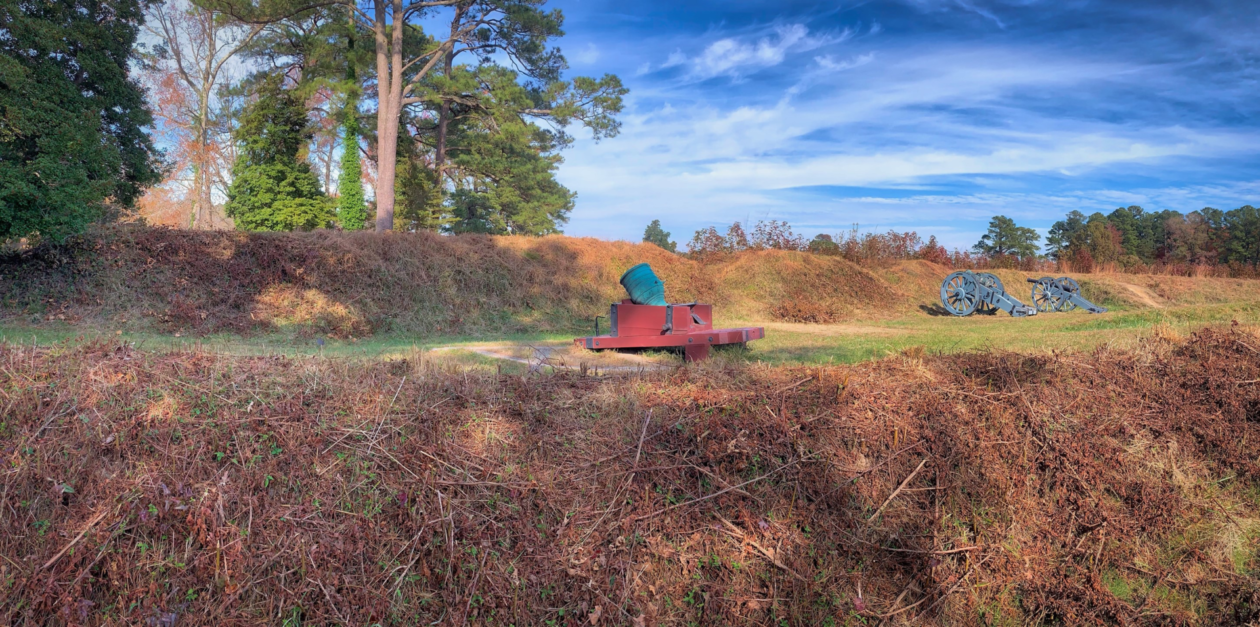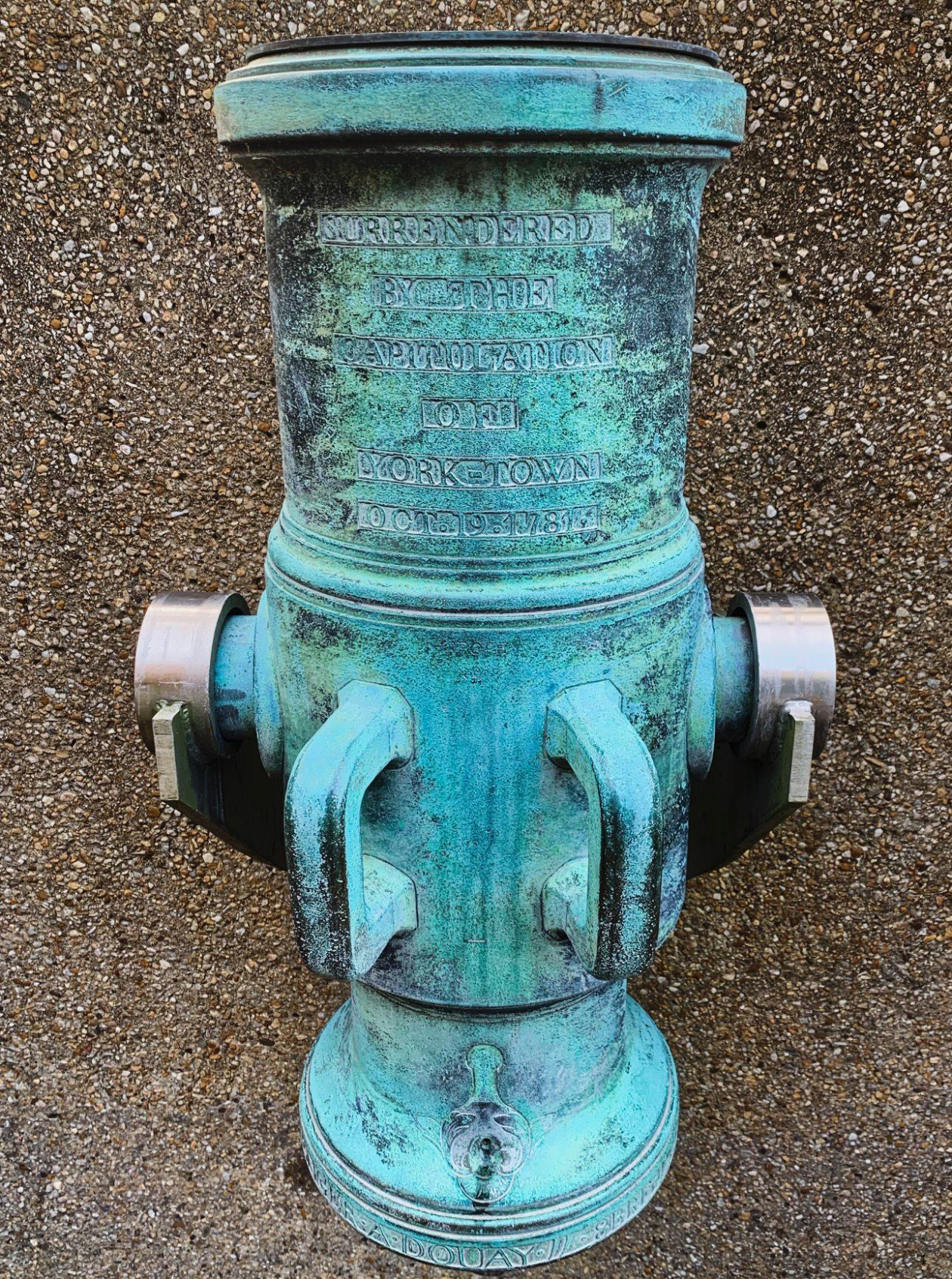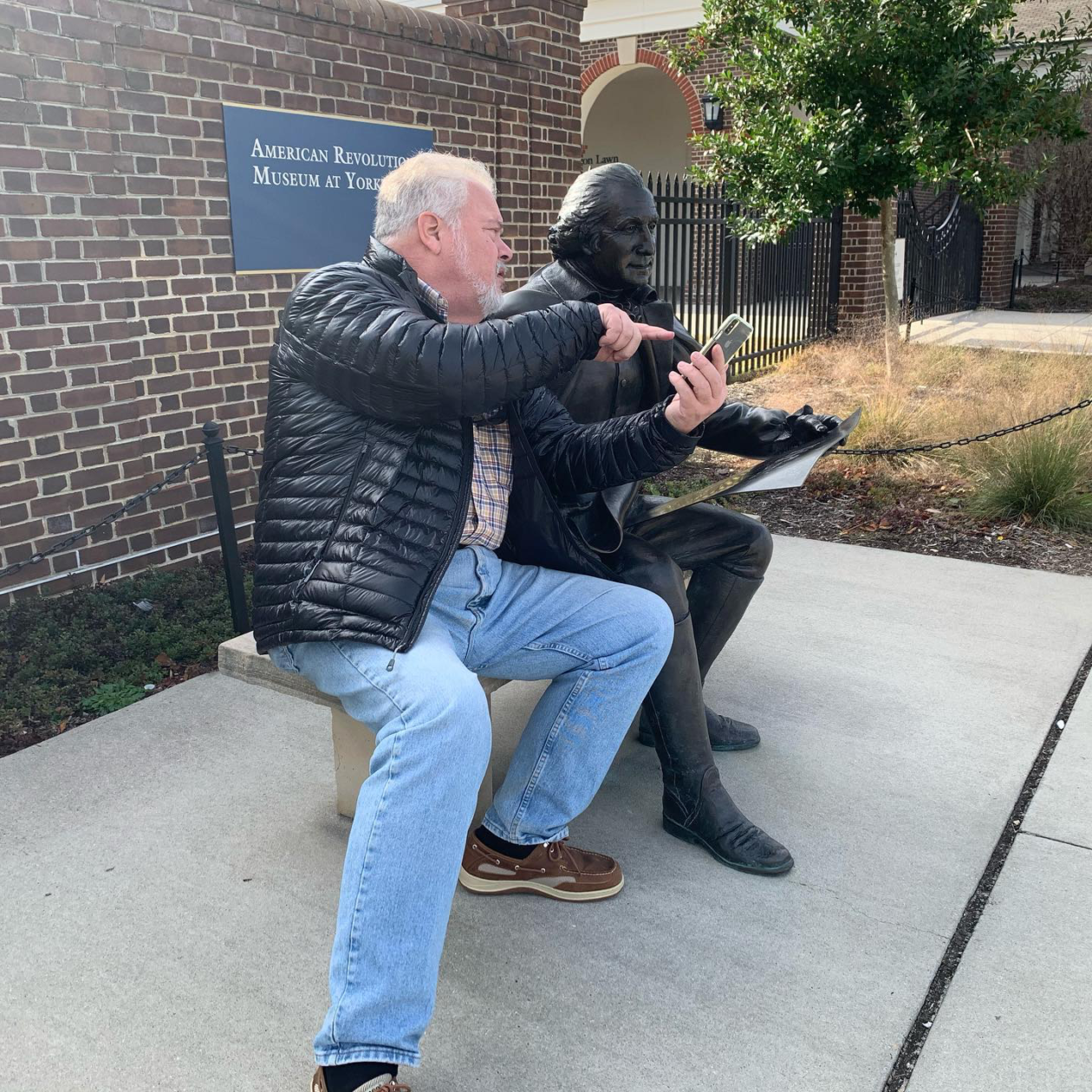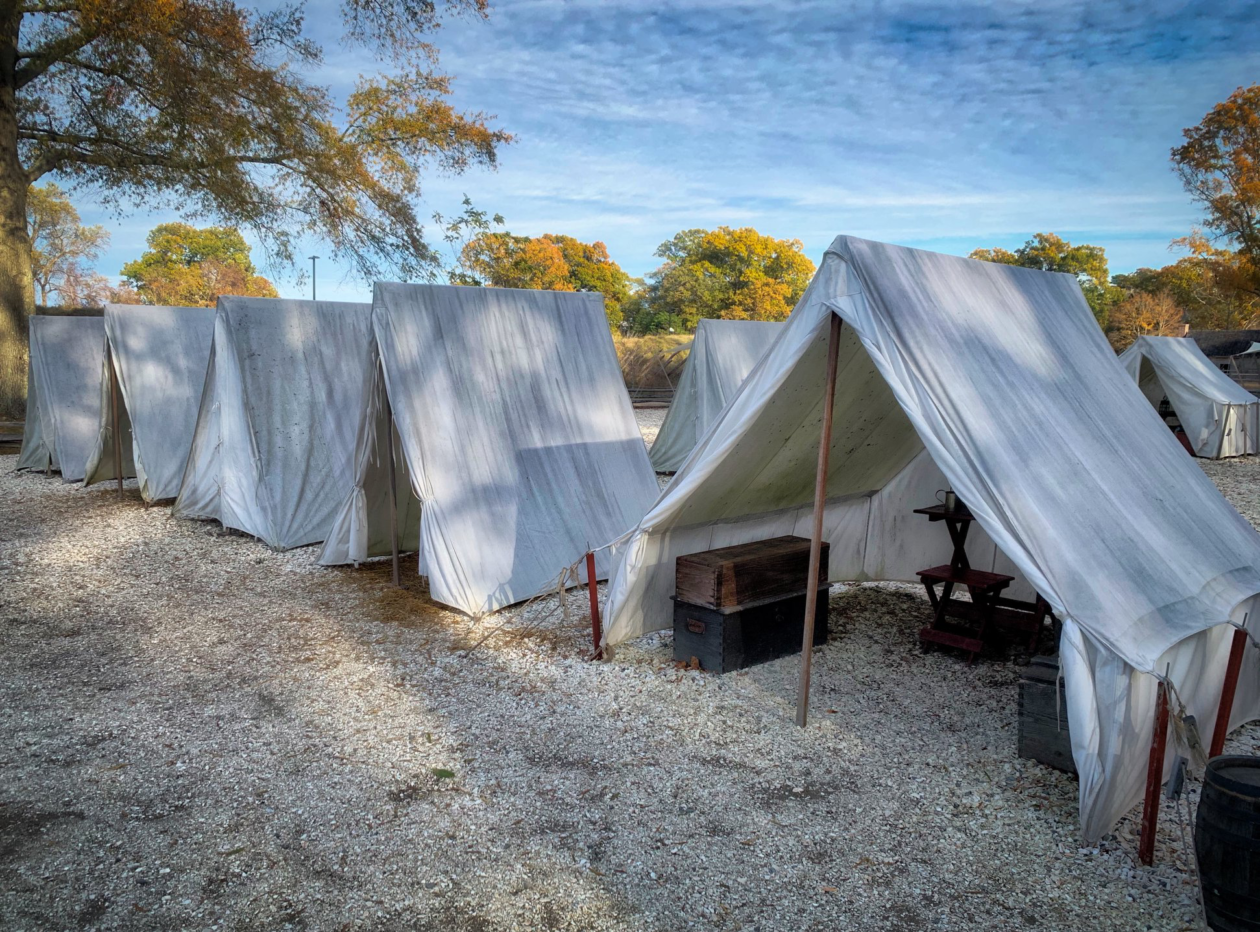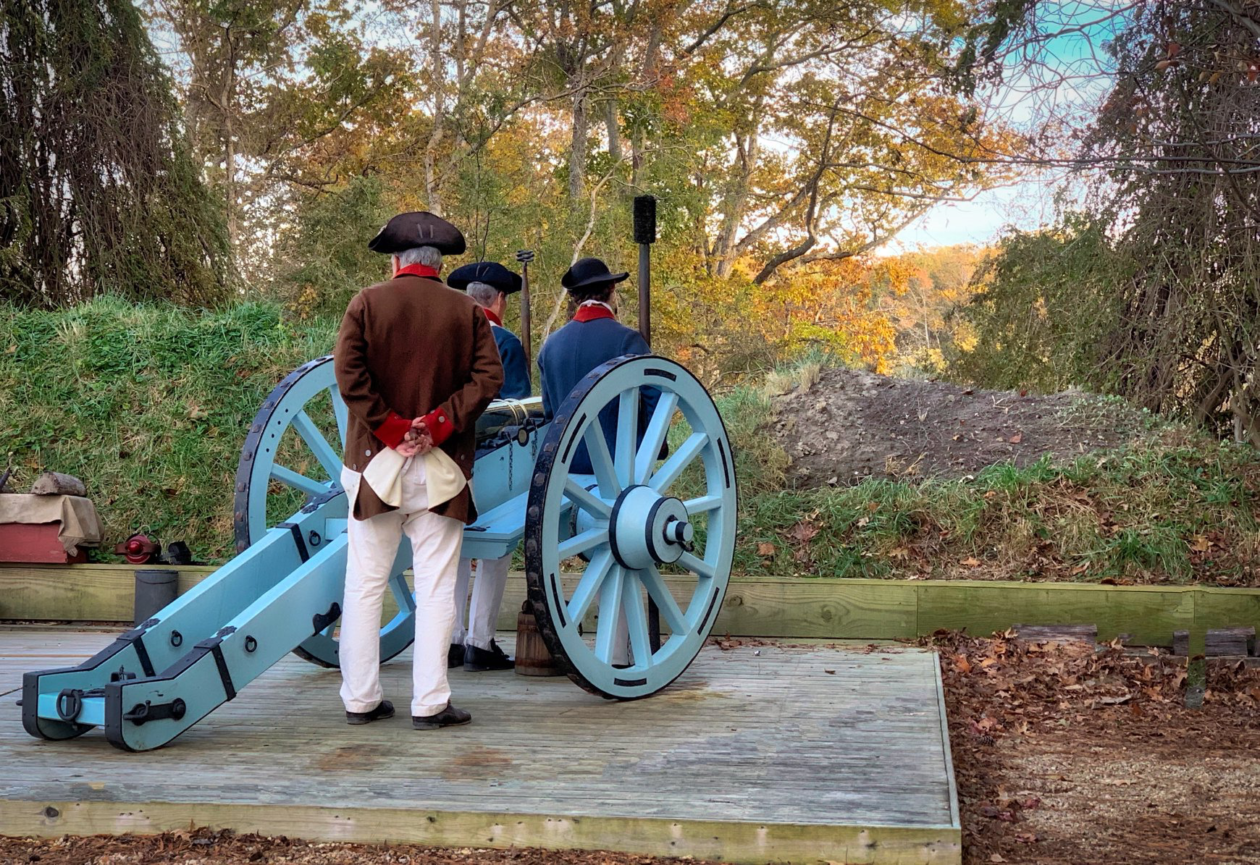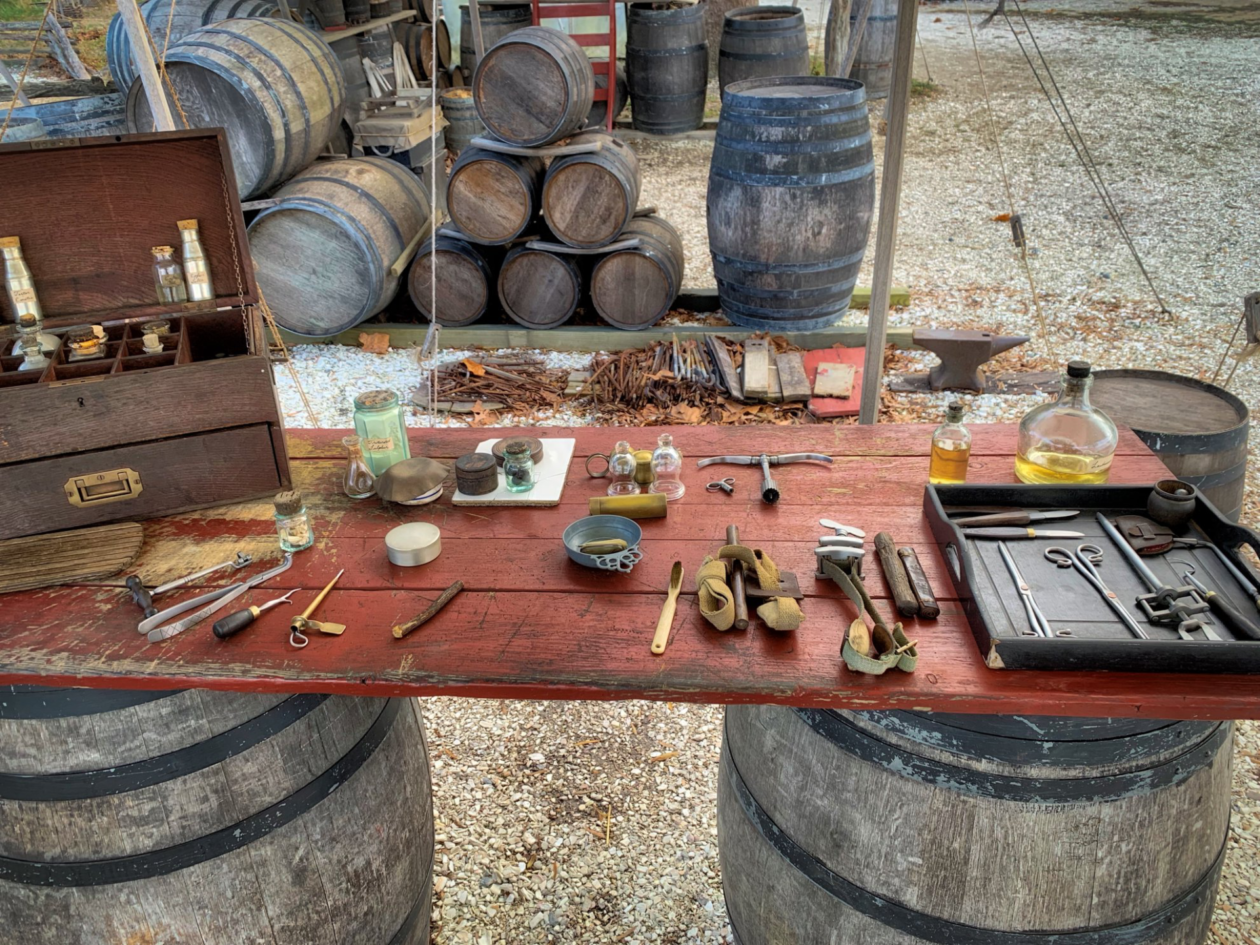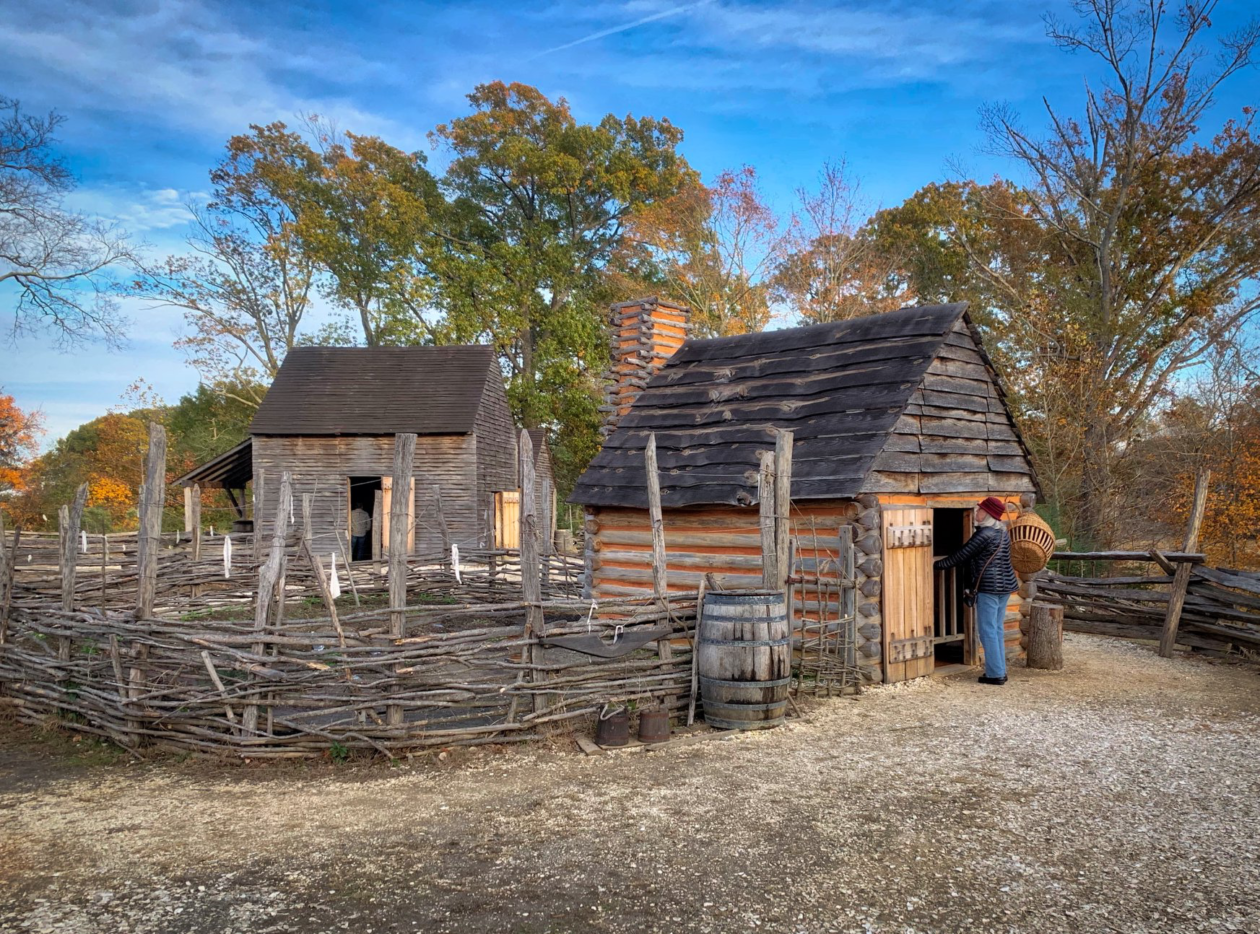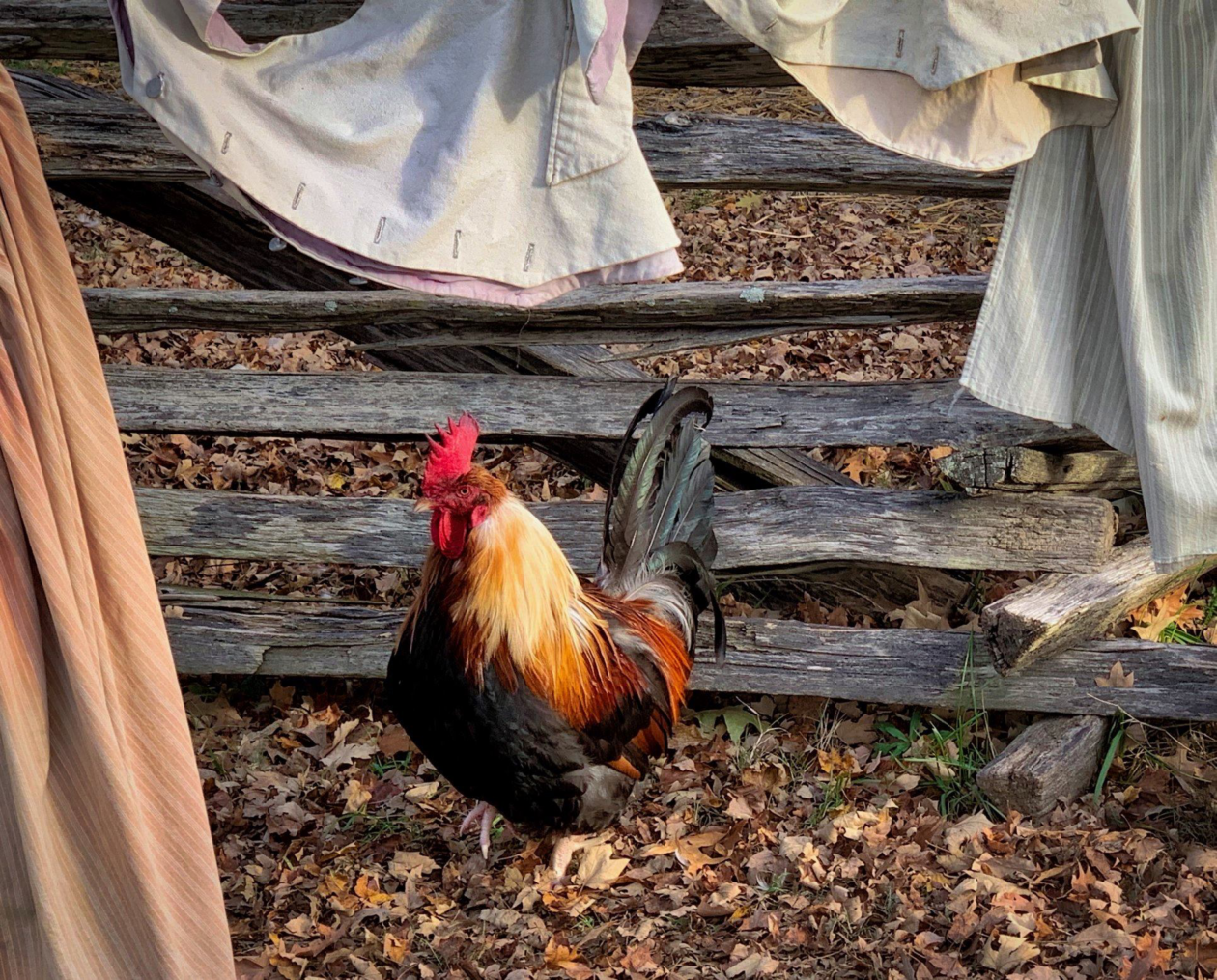Since we were going to be back on the East Coast and had the better part of a week to kill, we debated where to go — especially since we had lived in the greater DC Metro area for 15 years and had seen a lot of the area. But, amazingly, while living so close and literally haven driven by it numerous times on the way to other places, we had never visited “America’s Historic Triangle” — Jamestown, Yorktown, and Williamsburg. So we set our sights south and drove through the Shenandoah Valley (amidst a godawful amount of construction and at least one major accident requiring a detour) and then east towards the coast. We ended up staying less than a mile from Colonial Williamsburg and made that our hub.
So let me start an admission — I was woefully undereducated about the history that was represented by this triangle. You see, I grew up in CT and colonial history is all about New England. In this version of history, the clock starts in 1620 in Plymouth. Sure, I knew about Williamsburg; it’s that place you go to at Christmas for all the decorations, etc. We had one of those living history museums close to where I grew up — Sturbridge Village. And yeah, I remember there was a Jamestown Colony, but didn’t they all die? And sure, I knew the Battle of Yorktown was a pivotal battle in the Revolutionary War, but really not much else. Ask me about Lexington and Concord, the Boston Tea Party, etc. — now you’re talking! So the next five days turned out to be quite an eyeopener for me!
We decided to see the area in order of historical significance. That led us first to Jamestown — both the National Historic Park and Jamestowne Settlement. In the former case, Historic Jamestowne includes the original James Fort, the 17th century church and statehouse, the Historic Jamestowne Research Center, and the archeology museum on Jamestown Island. This really was the US’ birthplace, with the first colony bay the Virginia Company established in 1607. You really got an appreciation for the “feast or famine” existence they led, with some of the better] times occurring when Capt. John Smith was in charge and the horrible siege by the Powhatan native tribe that left 240 of the original 300 colonists would die over a winter and, recently discovered, evidence of cannibalism helped to keep the remainder alive. This feast-famine cycle would last until the King finally made Jamestowne a crown colony. But the other “first” here was the first representative assembly in English North America. Ultimately, the capital would move to Williamsburg. We really loved this place and learned a lot. It is in a continuing state of restoration, while it slowly gets overtaken by the rising James River.
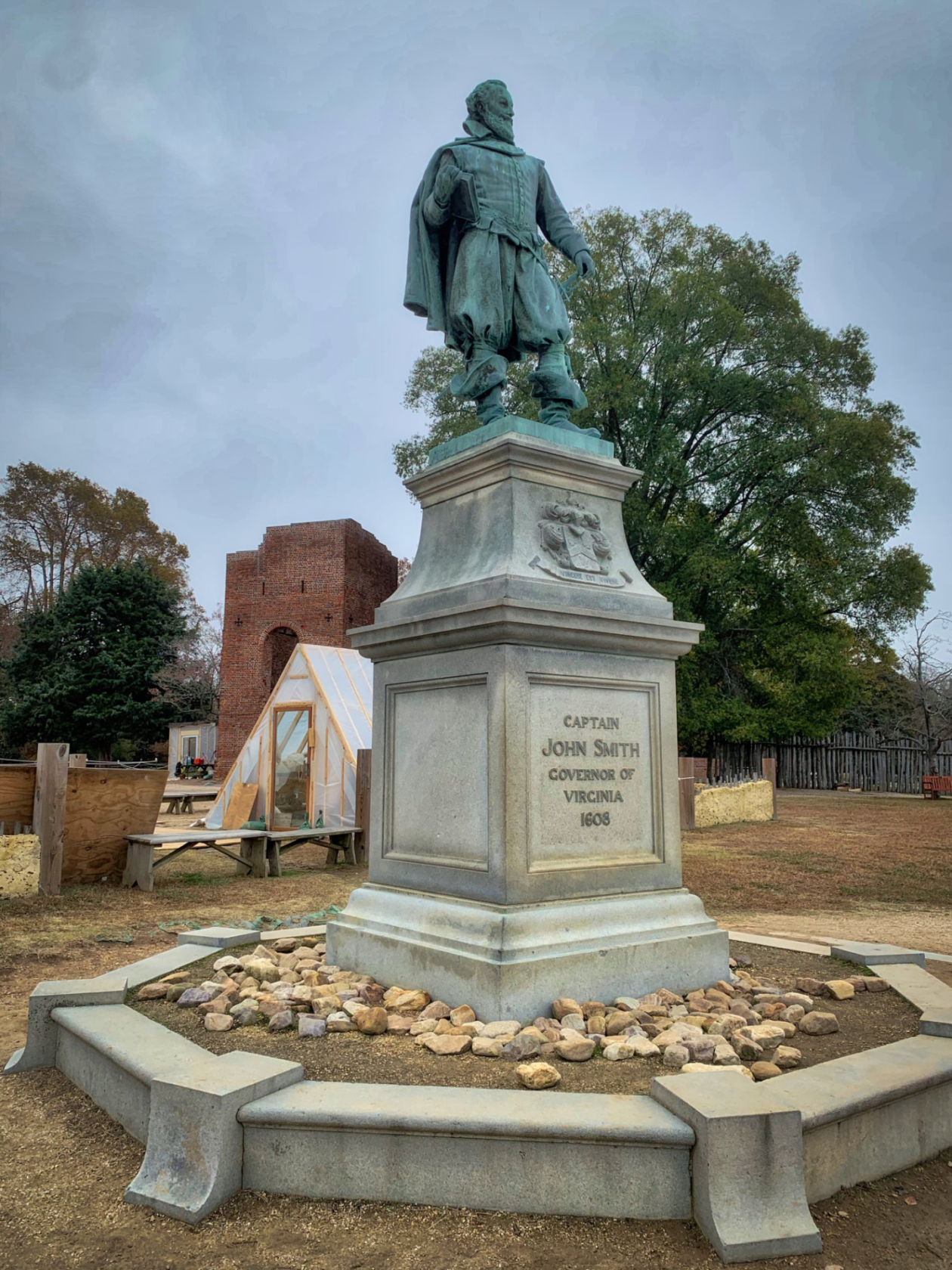
From there it was a short drive to the Jamestown Glasshouse. As big fans of blown glass, we really wanted to see this. They started blowing glass here in 1608, manned bay German immigrants. They used a staggering amount of wood to get the kiln up to 2300 F, often taking a couple of weeks. Unfortunately during the Powhatan siege and “starving time,” the glassworks closed and attempts to restart it failed. But today, the glassworks is back in full operation with many of the more experienced artists hailing from — yeah, you guessed it — Seattle!
From there, we went to Jamestowne Settlement — one of two living history museums that we visited while we were in the area. This is an extremely well-down museum, mixing live re-enactments, with a great static displays — all giving you a great sense of what like was life for these early settlers. It was a very full, but extremely interesting day. Tomorrow we start Williamsburg!
The next day saw us beginning what would be multiple short visits to Williamsburg — both during the day and at night. First of all, while in a fairly compact area, Colonial Williamsburg has a lot to take in. Also, not all exhibits are open every day. Finally, walking through Williamsburg late in the day and into the night gives you a whole new perspective of the place. You pretty much have it to yourself. And it is totally worth the time. After all, from 1699 until 1780, it was the political, cultural, and educational center of what was then the largest, most populous, and most influential of the American colonies. After the shift of Virginia’s capital to Richmond, Williamsburg returned to being a sleepy little college town and was in danger of losing many of the structures that had played such a prominent role in our history. Thankfully, through the philanthropy of John D. Rockefeller, Jr. the major restoration and preservation of this national treasure was undertaken.
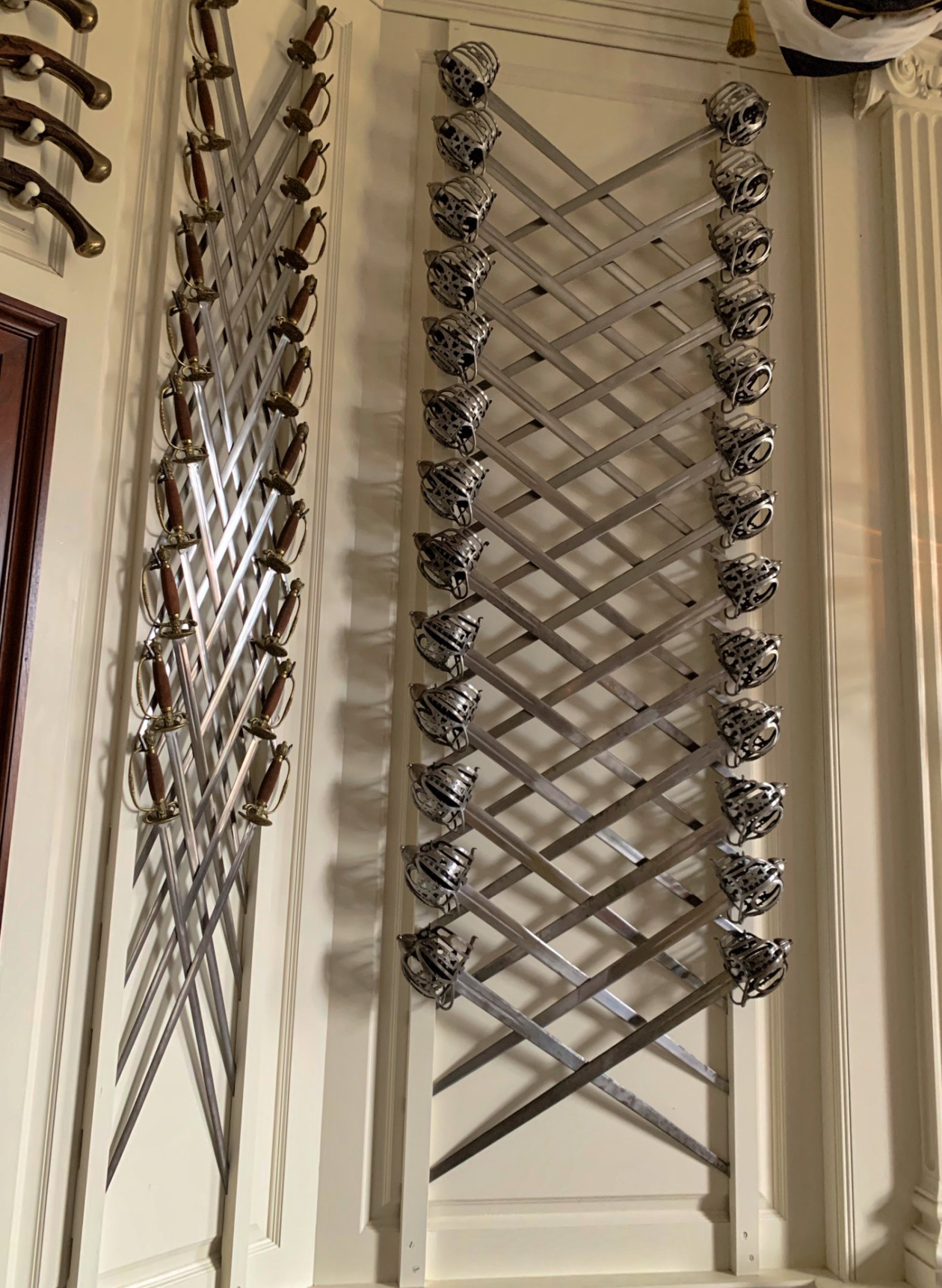
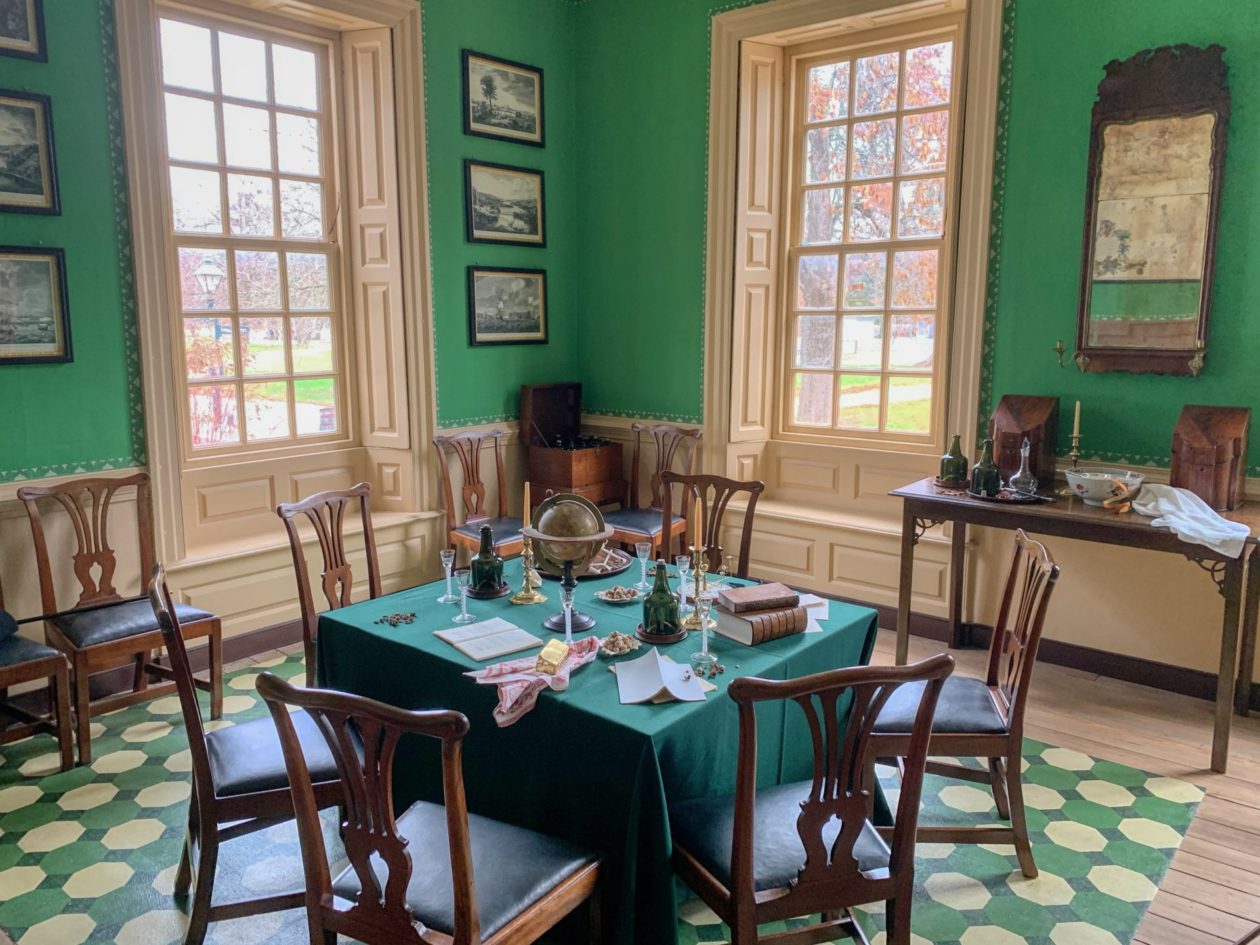
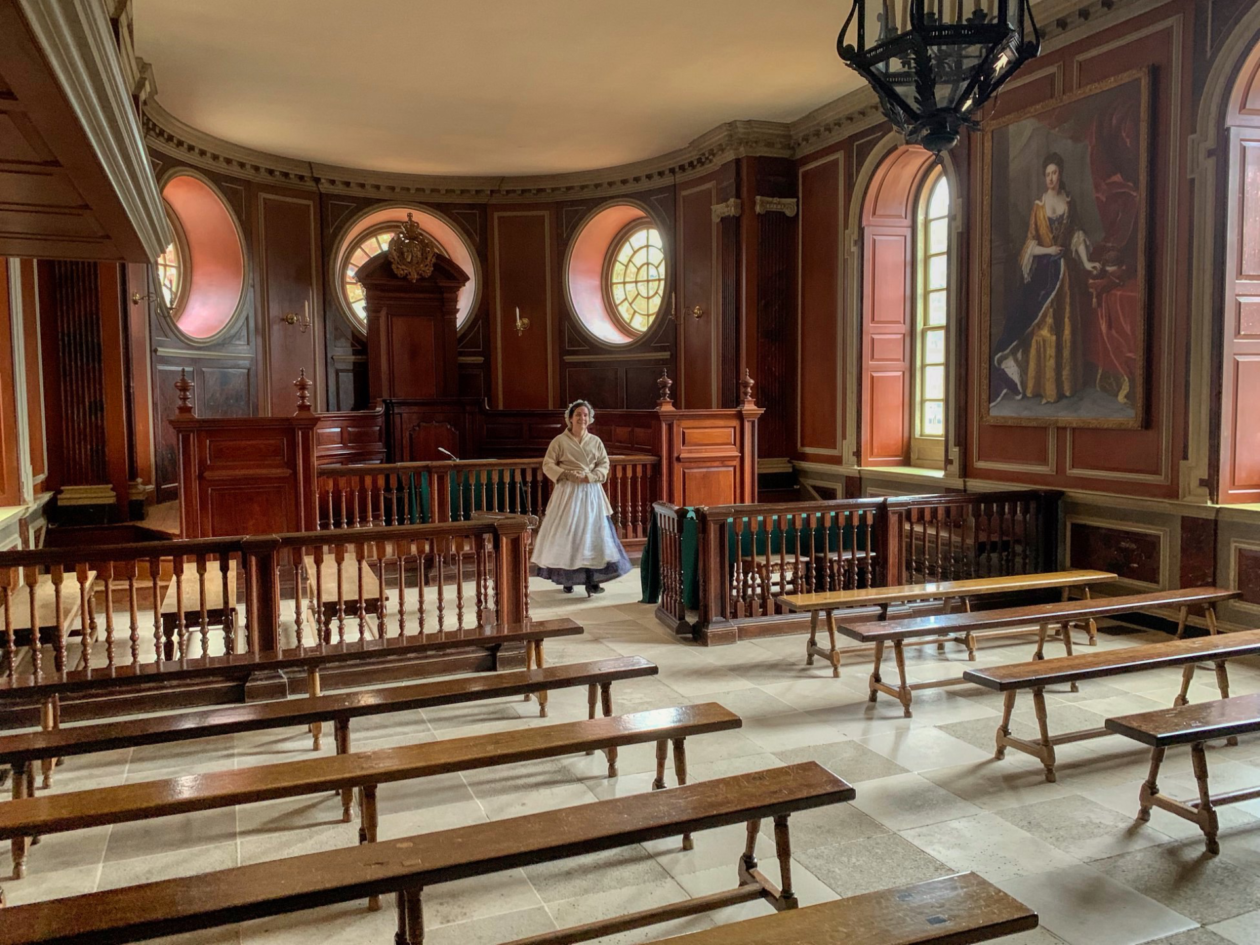
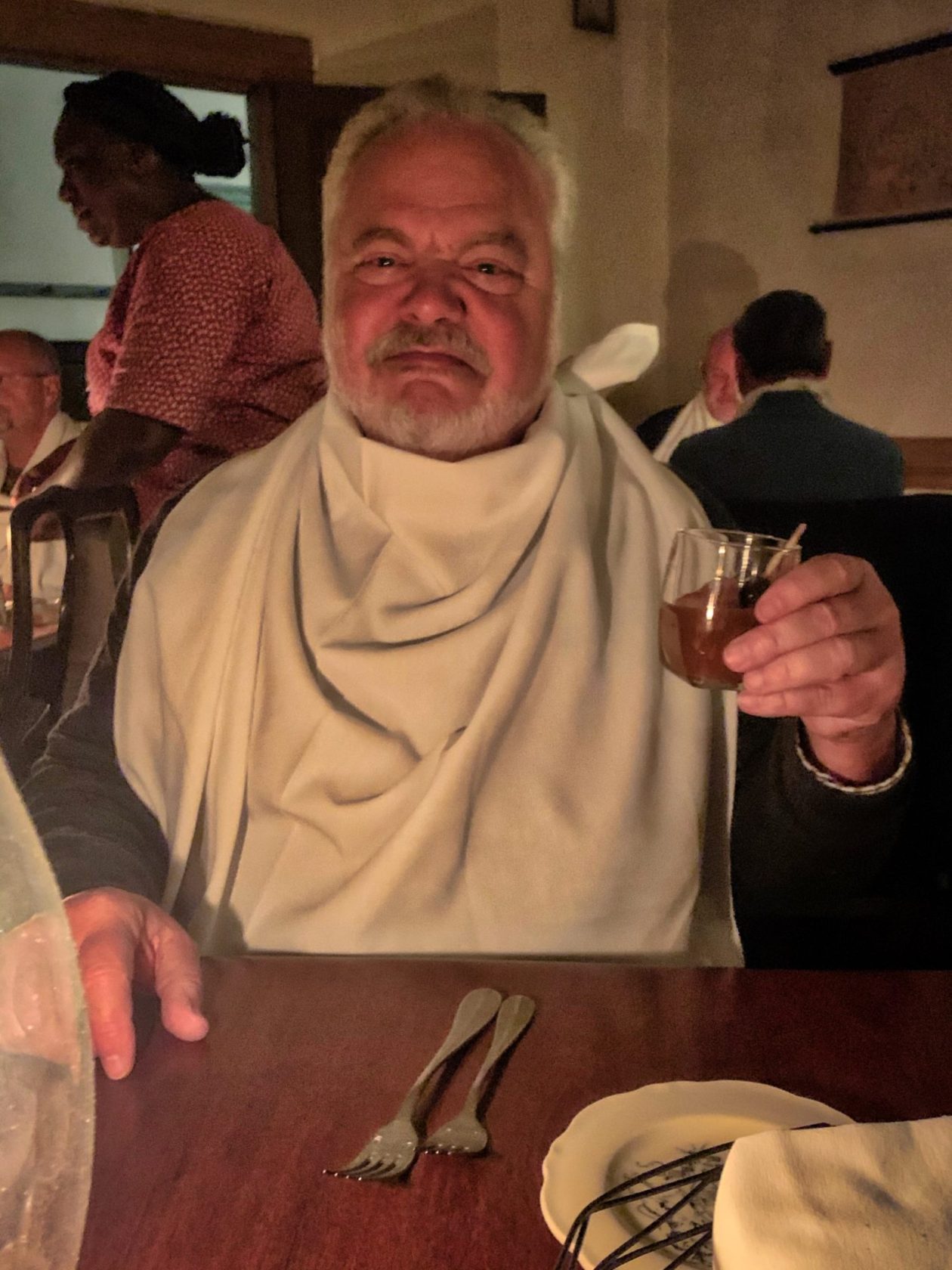
During our stay in the area, our dear friends Joe and Joy came down to visit us. Since they had previously lived in the Tidewater area, we looked for something else to do. We had heard that there was good fossil hunting on the James River. It turns out that this whole area sits on ancient sea beds and there are wide variety of bones, shells, and teeth along the river shorelines — including the state fossil of VA (who knew?) Chesapecten jeffersonius, which looks like a giant scallop. In any regard, we took the car ferry across the James River and headed down to Chippokes Plantation State Park outside of Surry. And the hype was really true — there are all kinds of fossils laying across the narrow beaches. I think Joe was the big winner for the day, but the day was gorgeous and we stopped off for Oyster Po’ Boys at a restaurant along the river.
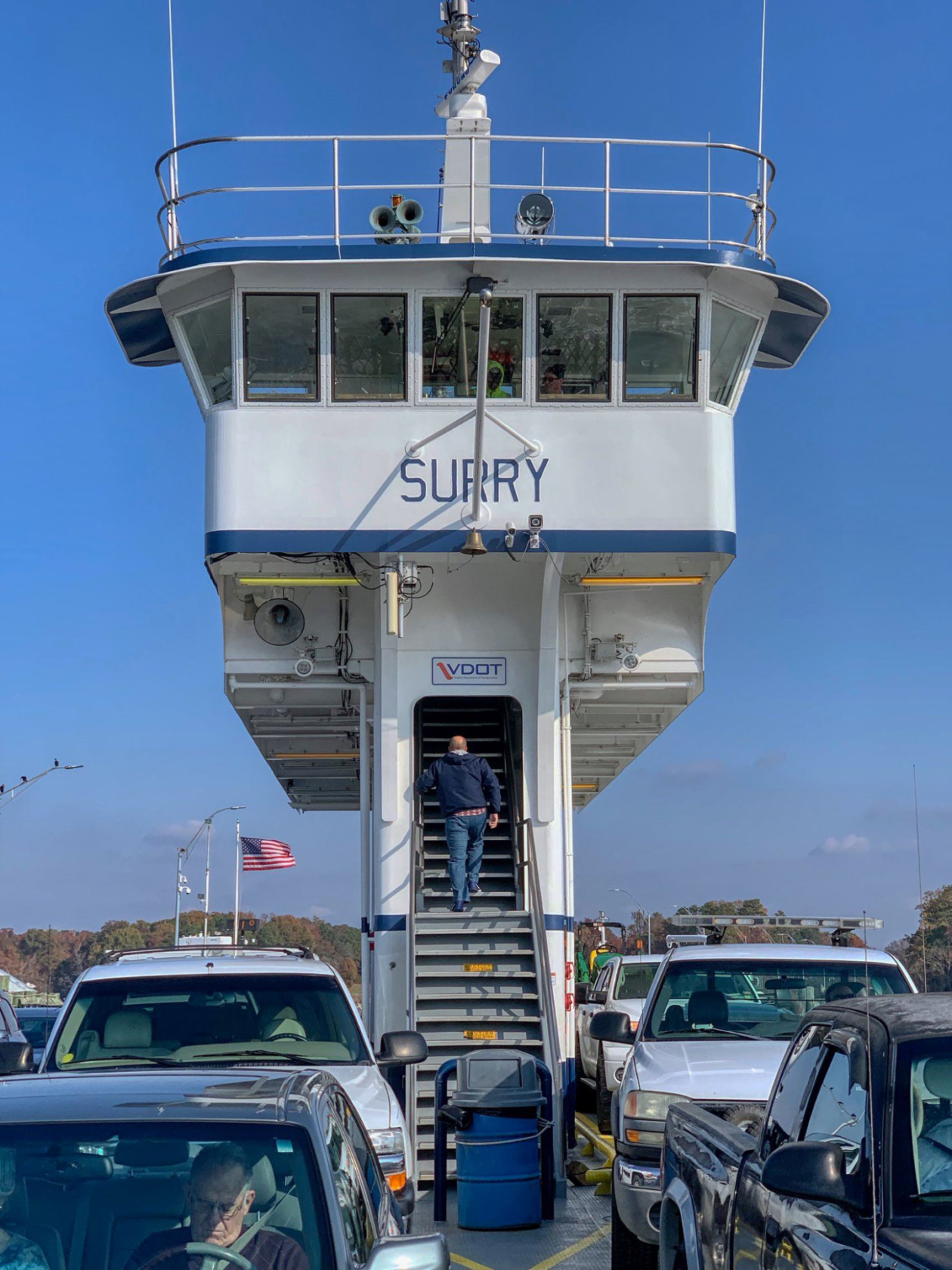
Our final stop was in Yorktown, where we visited both the National Battlefield and the American Revolution Museum. The successful siege of Yorktown against Lord Cornwallis’ 9000-man British Army was the last major battle of the Revolutionary War. But for it to work, so many disparate parts had to come together — the French fleet arrived in time to drive off the British fleet attempting to resupply the British Army and the troops of George Washington and the Comte de Rochambeau had to march all the way from New York to begin the siege. This, in effect, left the British boxed in and only able to defend themselves through a series of redoubts on the outskirts of Yorktown. But that was only buying a little time. For nearly a week Washington ordered constant bombardment that kept the British from repairing their redoubts. At the same time, the Americans and French built new redoubts closer to British positions. This also required one of the bravest assaults of the battle — a stealthy attack by the Americans on two advanced British redoubts, using only fixed bayonets. The commander of this raid was none other than Alexander Hamilton. It was amazing to walk through the reconstructed redoubts and imagine what it like for the British being surrounded on three sides, in some cases just 400 yards away from the Americans. With his back to the river, Cornwallis was forced to surrender. It was also moving to walk around Surrender Field and imagine this field filled with the American and French victors watching the British and Germans lay down their arms. The field pieces were ultimately used as trophies and inscribed recognizing they were surrendered pieces. From the battlefield, we went to the American Revolution Museum. It also had a museum and living history component, but it was late in the day so we didn’t get to spend a lot of time there.
Some final thoughts about “America’s Historic Triangle.” As I mentioned at the beginning, growing up a New Englander, I really never knew many of the things that I learned here. Many of the foundational elements of our US system of government had their start here — before the Pilgrims even landed! Rather than just being a localized colony, explorers left Jamestowne, opened trade routes, and even explored and named locations (e.g., Martha’s Vineyard us named after Bartholomew Gosnold’s daughter) — all before the Pilgrims landed. So why this Pilgrim-centric view of our early history? Arguably, the Virginia Company (and ultimate King’s Colony) fared better in all dimensions (e.g., representative government, economics, trade, arts) and yet we live with this romanticized notion of the Pilgrims. It was suggested to me that the role of the Tidewater area was greatly diminished after the Civil War. I guess I can believe that since the victors are the ones who get to write the history. If it is true, isn’t it time to revisit things and put the emphasis on the right syllable? I sure hope so…
This entry was posted in Travel, United States, Virginia